Paul van Yperen's Blog, page 155
July 9, 2021
Editions F. Nugeron
French postcard publisher Editions F. Nugeron published no less than 82 series of postcards until 1991 when production ceased. The postcards by François Nugeron are loved by collectors for their diversity: cinema posters (the E series), designs by famous illustrators (the H series), magazine covers (the BD series), etc. And of course, François Nugeron created several series with star portraits of film actors and pop singers on which we focus in this post. Reportedly of each design 5000 postcards were printed.
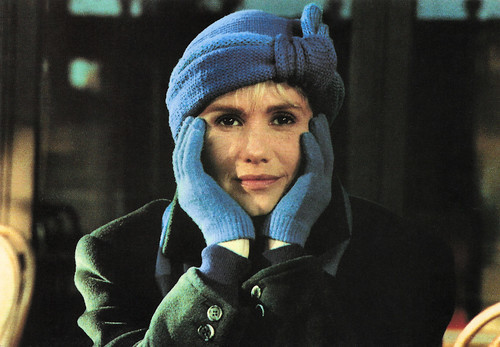
French postcard by Editions F. Nugeron. Photo: Collection d'Ecole de Cinéma Camiris, Lyon. Miou-Miou in La lectrice/The Reader (Michel Deville, 1988).
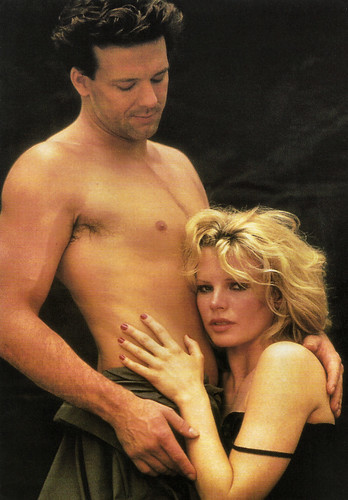
French postcard by Editions F. Nugeron, Paris, no. 2. Photo: Collection de l'École de Cinéma CAMIRIS. Kim Basinger and Mickey Rourke in Nine ½ Weeks (Adrian Lyne, 1986).
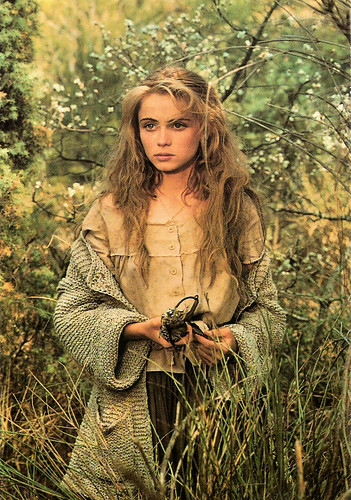
French postcard by Editions F. Nugeron, Paris, no. 3. Photo: Collection de l'Ecole de Cinéma Camiris. Emmanuelle Béart in Manon des Sources/Manon of the Spring (Claude Berri, 1986).
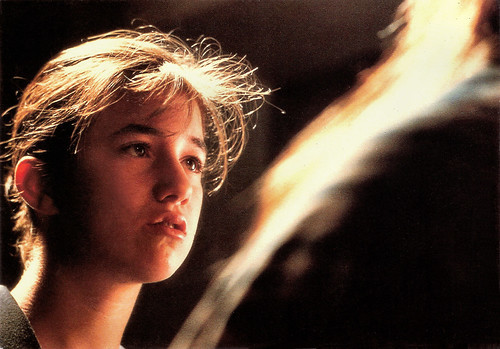
French postcard by Editions F. Nugeron, Paris, no. 11. Charlotte Gainsbourg in Charlotte for Ever (Serge Gainsbourg, 1986).
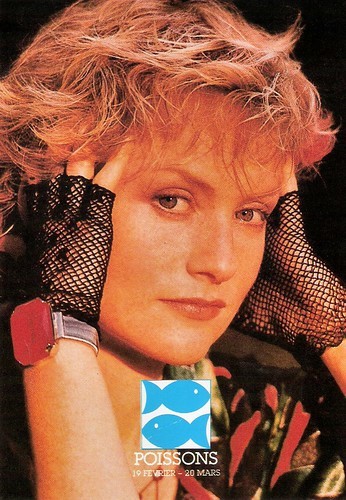
French postcard by Editions F. Nugeron in the Signes du zodiaque series, no. 8 - Poissons (Pisces). Isabelle Huppert .
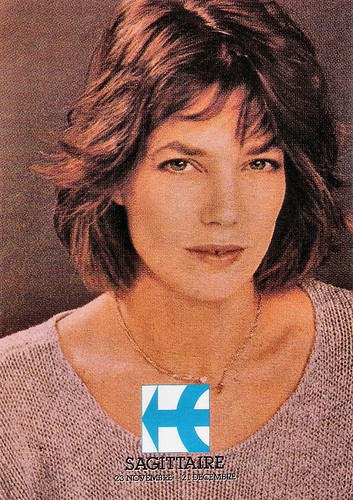
French postcard by Editions F. Nugeron in the Signes du Zodiaque series, no. 13 - Sagittaire (Sagittarius). Jane Birkin .

French postcard by Editions F. Nugeron in the Chanteurs Series, no. 17. Boy George.
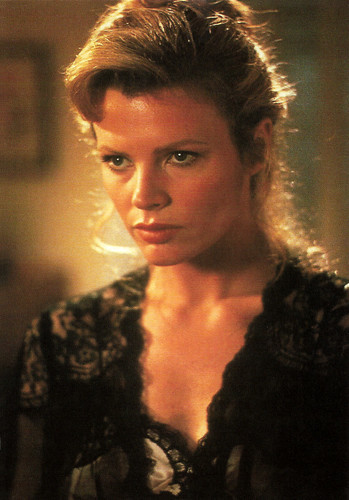
French postcard by Editions F. Nugeron, Paris, no. 18. Photo: Collection de l'Ecole de Cinéma Camiris, Lyon. Kim Basinger in Nadine (Robert Benton, 1987).

French postcard by Editions F. Nugeron, Paris, no. 22. Isabelle Adjani .
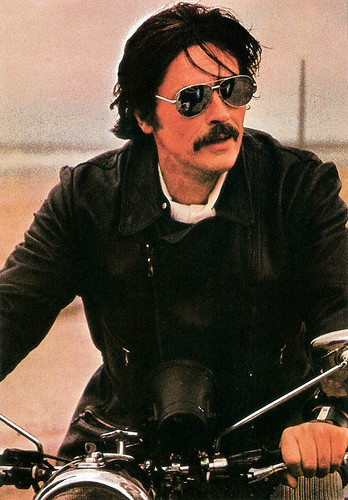
French postcard by Editions F. Nugeron in the Star Series, no. 28. Alain Delon .
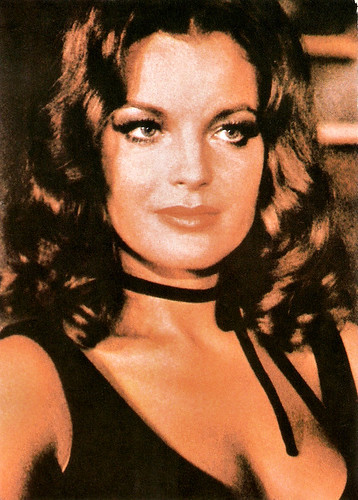
French postcard by Editions F. Nugeron in the Star Series, no. 41. Romy Schneider in Max et les ferrailleurs/Max and the Junkmen (Claude Sautet, 1971).
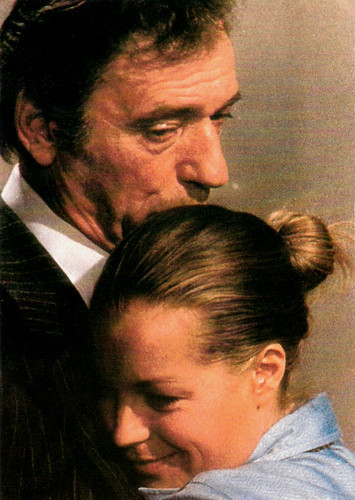
French postcard by Editions F. Nugeron in the Star Series, no. 58. Yves Montand and Romy Schneider in Clair de femme/Womanlight (Costa Gravas, 1979).
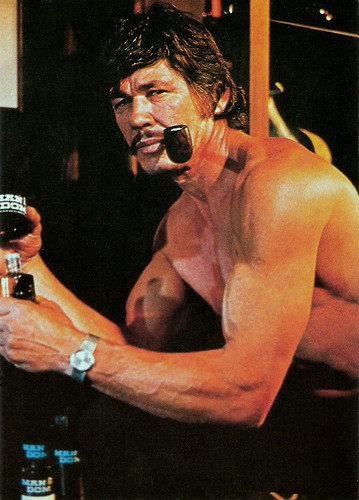
French postcard by Editions F. Nugeron in the Star Series, no. 62. Photo: J. Ritchie. Charles Bronson .
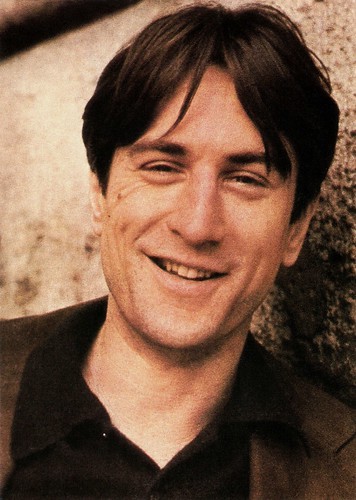
French postcard by Editions F. Nugeron in the Star Series, no. 66. Photo: J. Ritchie / Classico, San Francisco. Robert De Niro .
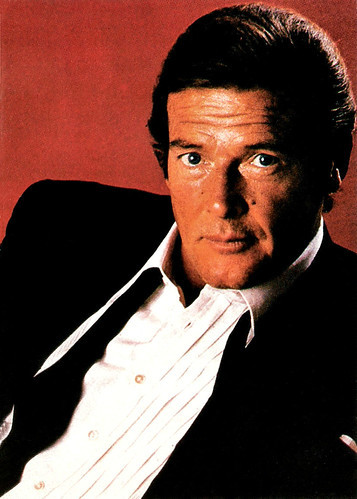
French postcard by Editions F. Nugeron. Photo: J. Ritchie. Roger Moore .
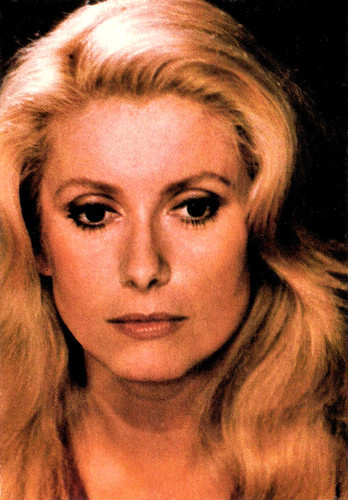
French postcard by Editions F. Nugeron, no. 71. Photo: J. Ritchie. Catherine Deneuve .
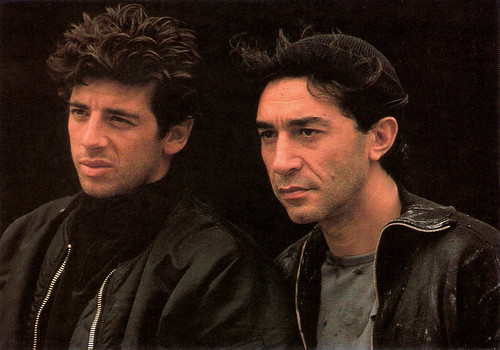
French postcard by Editions F. Nugeron. Richard Berry and Patrick Bruel in L'Union Sacrée/Brothers in Arms (Alexandre Arcady, 1989).
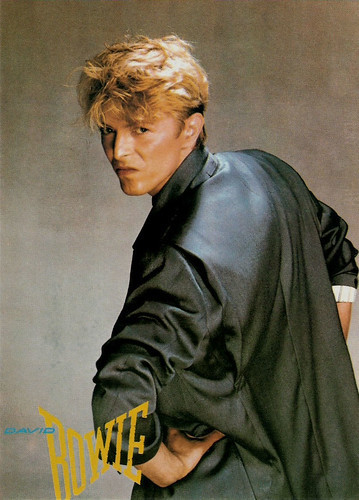
French postcard by Editions F. Nugeron in the Star Series, no. 87. Photo: Greg Gorman, 1983. David Bowie .
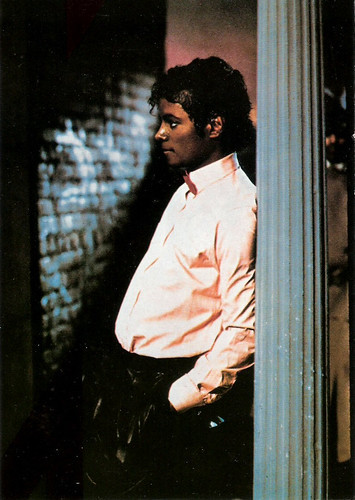
French postcard by Editions F. Nugeron in the Star Series, no. 89. Michael Jackson in the video clip Billie Jean (Steve Barron, 1983).
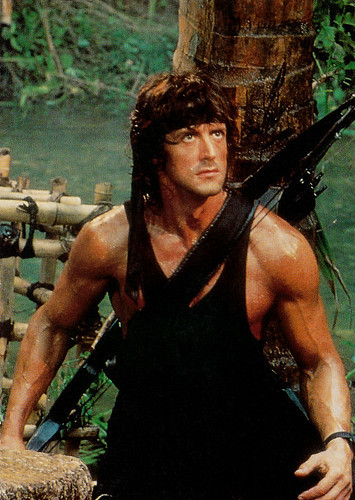
French postcard by Editions F. Nugeron in the Star series, no. 105. Photo: Carolco / Anabasis Investments BV. Sylvester Stallone in Rambo - First Blood Part II (George P. Cosmatos, 1985).
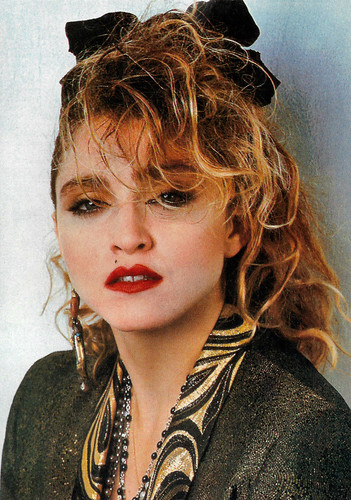
French postcard in the 'série chanteurs' by Editions Gil / Edition F. Nugeron, no. 131. Madonna in Desperately Seeking Susan (Susan Seidelman, 1985).
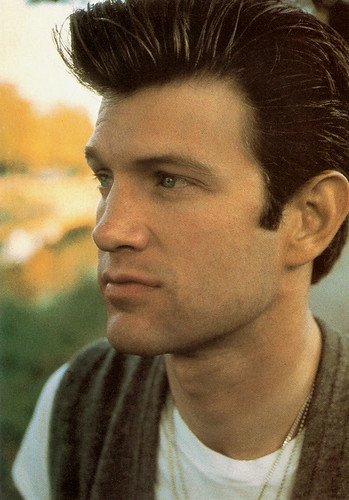
French postcard by Editions F. Nugeron in the Record Series, no. 139. Photo: E. Todoir / London Features International. Chris Isaak.
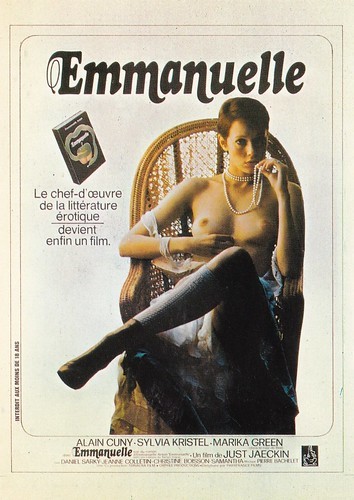
French postcard by Editions F. Nugeron, Paris, no. E 162. French poster by René Ferracci for Emmanuelle (Just Jaeckin, 1974), starring Sylvia Kristel . Collection: Carla Bosch (Meiter).
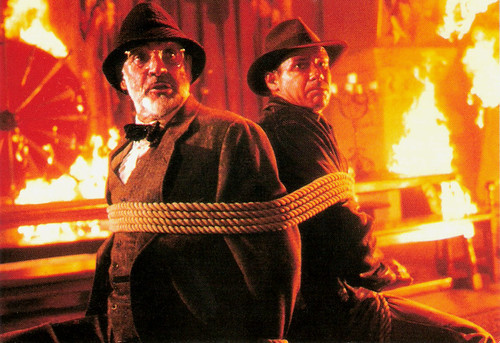
French postcard by Editions Nugeron, no. 198. Photo: Lucasfilm. Sean Connery and Harrison Ford in Indiana Jones and the Last Crusade (Steven Spielberg, 1989).
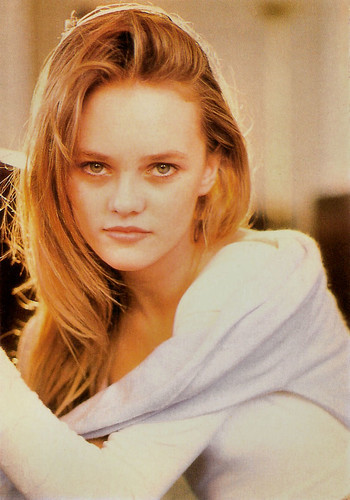
French postcard by Ed. F. Nugeron in the Record Series, no. 235. Photo: Paul Cox / London Features. Vanessa Paradis .
Source: Steve Henot (La Nouvelle République - French).

French postcard by Editions F. Nugeron. Photo: Collection d'Ecole de Cinéma Camiris, Lyon. Miou-Miou in La lectrice/The Reader (Michel Deville, 1988).

French postcard by Editions F. Nugeron, Paris, no. 2. Photo: Collection de l'École de Cinéma CAMIRIS. Kim Basinger and Mickey Rourke in Nine ½ Weeks (Adrian Lyne, 1986).

French postcard by Editions F. Nugeron, Paris, no. 3. Photo: Collection de l'Ecole de Cinéma Camiris. Emmanuelle Béart in Manon des Sources/Manon of the Spring (Claude Berri, 1986).

French postcard by Editions F. Nugeron, Paris, no. 11. Charlotte Gainsbourg in Charlotte for Ever (Serge Gainsbourg, 1986).

French postcard by Editions F. Nugeron in the Signes du zodiaque series, no. 8 - Poissons (Pisces). Isabelle Huppert .

French postcard by Editions F. Nugeron in the Signes du Zodiaque series, no. 13 - Sagittaire (Sagittarius). Jane Birkin .

French postcard by Editions F. Nugeron in the Chanteurs Series, no. 17. Boy George.

French postcard by Editions F. Nugeron, Paris, no. 18. Photo: Collection de l'Ecole de Cinéma Camiris, Lyon. Kim Basinger in Nadine (Robert Benton, 1987).

French postcard by Editions F. Nugeron, Paris, no. 22. Isabelle Adjani .

French postcard by Editions F. Nugeron in the Star Series, no. 28. Alain Delon .

French postcard by Editions F. Nugeron in the Star Series, no. 41. Romy Schneider in Max et les ferrailleurs/Max and the Junkmen (Claude Sautet, 1971).

French postcard by Editions F. Nugeron in the Star Series, no. 58. Yves Montand and Romy Schneider in Clair de femme/Womanlight (Costa Gravas, 1979).

French postcard by Editions F. Nugeron in the Star Series, no. 62. Photo: J. Ritchie. Charles Bronson .

French postcard by Editions F. Nugeron in the Star Series, no. 66. Photo: J. Ritchie / Classico, San Francisco. Robert De Niro .

French postcard by Editions F. Nugeron. Photo: J. Ritchie. Roger Moore .

French postcard by Editions F. Nugeron, no. 71. Photo: J. Ritchie. Catherine Deneuve .

French postcard by Editions F. Nugeron. Richard Berry and Patrick Bruel in L'Union Sacrée/Brothers in Arms (Alexandre Arcady, 1989).

French postcard by Editions F. Nugeron in the Star Series, no. 87. Photo: Greg Gorman, 1983. David Bowie .

French postcard by Editions F. Nugeron in the Star Series, no. 89. Michael Jackson in the video clip Billie Jean (Steve Barron, 1983).

French postcard by Editions F. Nugeron in the Star series, no. 105. Photo: Carolco / Anabasis Investments BV. Sylvester Stallone in Rambo - First Blood Part II (George P. Cosmatos, 1985).

French postcard in the 'série chanteurs' by Editions Gil / Edition F. Nugeron, no. 131. Madonna in Desperately Seeking Susan (Susan Seidelman, 1985).

French postcard by Editions F. Nugeron in the Record Series, no. 139. Photo: E. Todoir / London Features International. Chris Isaak.

French postcard by Editions F. Nugeron, Paris, no. E 162. French poster by René Ferracci for Emmanuelle (Just Jaeckin, 1974), starring Sylvia Kristel . Collection: Carla Bosch (Meiter).

French postcard by Editions Nugeron, no. 198. Photo: Lucasfilm. Sean Connery and Harrison Ford in Indiana Jones and the Last Crusade (Steven Spielberg, 1989).

French postcard by Ed. F. Nugeron in the Record Series, no. 235. Photo: Paul Cox / London Features. Vanessa Paradis .
Source: Steve Henot (La Nouvelle République - French).
Published on July 09, 2021 22:00
July 8, 2021
Les Alpes rouges (1917)
Pathé Frères produced the silent drama Les Alpes rouges/The Red Alps (1917) by Maurice Challiot. Stars were two singers of the Opéra-Comique, Mary Margay and Louis Azéma. The six Spanish collector cards were made for Chocolate Pi in Barcelona.
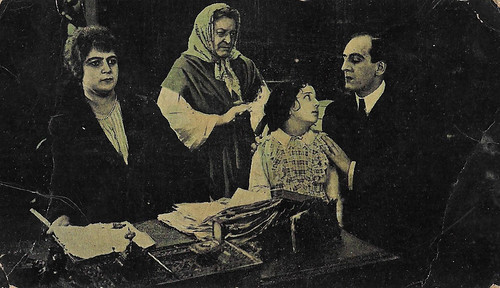
Spanish collectors card by Chocolate Pi, Barcelona, no. 1 of 6 cards. Photo: SCAGL / Pathé Frères. Louis Azéma in Les Alpes rouges (Maurice Challiot, 1917).
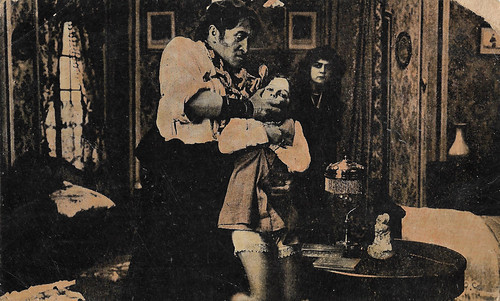
Spanish collectors card by Chocolate Pi, Barcelona, no. 2 of 6 cards. Photo: SCAGL / Pathé Frères. Louis Azéma in Les Alpes rouges (Maurice Challiot, 1917).
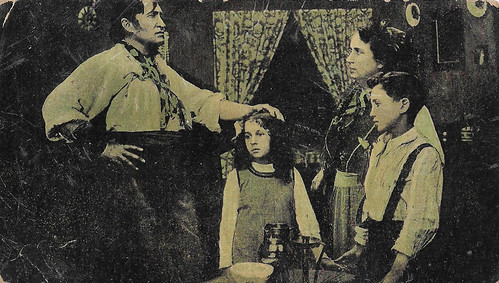
Spanish collectors card by Chocolate Pi, Barcelona, no. 3 of 6 cards. Photo: SCAGL / Pathé Frères. Louis Azéma in Les Alpes rouges (Maurice Challiot, 1917).
The great lady and the smuggler
The Marquise de Valbrun is proud of her nobility dating back to the Crusades. She lives with her brother, the Count of Haute-Luce, in a wild gorge in the Alps, at the Château de Haute-Luce. The Marquise spends her leisure time poring over the family scrolls, while her brother divides his time between hunting and excursions in the surrounding area.
But an intruder slips into the seigneurial residence. Marthe Leclerc, a commoner once loved by the Count, recommends their daughter, little Violette, to him on her deathbed, and has her brought to him by a servant. The Count willingly makes room in his heart and home for the child. This is not the case with the marquise, who hates the little girl and has only one desire: to take her away.
A smuggler who has been caught on the Count's land serves her purpose. One evening, the latter, guided by the great lady, kidnaps Violette. Violette, entrusted to the care of a brave peasant woman, grows up next to the son of her adoptive mother. A beautiful love story begins between the two young people. And after some dark adventures in which Cavalotti the smuggler plays a tragic role, Violette is reunited with her father and marries the man she loves.
The leads in Les Alpes rouges (1917) were played by Mlle Mary Margay or Margoy and M. Azéma, both from the Parisian Opéra-Comique. Intended is probably the French singer and painter Louis Azéma (1876-1963), who somewhere between 1902 and 1935 was engaged for a long time by the Opéra-Comique. It seems that Les Alpes rouges (1917) was his only film.
The film magazine Hebdo-Film was not particularly impressed by the script and the acting but loved the location shooting in the French Alps. It is not exactly clear which part Azéma and Margay played, but he may have been the smuggler Cavalotti, who kidnaps little Violette.
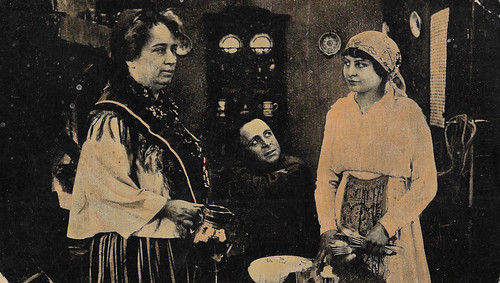
Spanish collectors card by Chocolate Pi, Barcelona, no. 4 of 6 cards. Photo: SCAGL / Pathé Frères. Louis Azéma in Les Alpes rouges (Maurice Challiot, 1917).
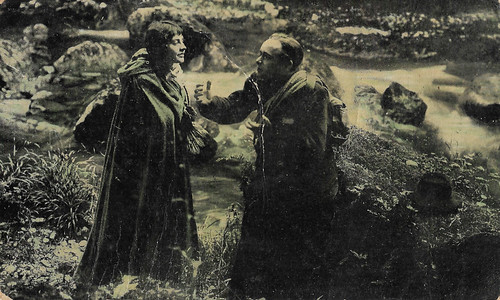
Spanish collectors card by Chocolate Pi, Barcelona, no. 6 of 6 cards. Photo: SCAGL / Pathé Frères. Louis Azéma in Les Alpes rouges (Maurice Challiot, 1917).
Sources: Gallica (French), Fondation Seydoux-Pathé (French), Cine-Ressources (French), and IMDb.

Spanish collectors card by Chocolate Pi, Barcelona, no. 1 of 6 cards. Photo: SCAGL / Pathé Frères. Louis Azéma in Les Alpes rouges (Maurice Challiot, 1917).

Spanish collectors card by Chocolate Pi, Barcelona, no. 2 of 6 cards. Photo: SCAGL / Pathé Frères. Louis Azéma in Les Alpes rouges (Maurice Challiot, 1917).

Spanish collectors card by Chocolate Pi, Barcelona, no. 3 of 6 cards. Photo: SCAGL / Pathé Frères. Louis Azéma in Les Alpes rouges (Maurice Challiot, 1917).
The great lady and the smuggler
The Marquise de Valbrun is proud of her nobility dating back to the Crusades. She lives with her brother, the Count of Haute-Luce, in a wild gorge in the Alps, at the Château de Haute-Luce. The Marquise spends her leisure time poring over the family scrolls, while her brother divides his time between hunting and excursions in the surrounding area.
But an intruder slips into the seigneurial residence. Marthe Leclerc, a commoner once loved by the Count, recommends their daughter, little Violette, to him on her deathbed, and has her brought to him by a servant. The Count willingly makes room in his heart and home for the child. This is not the case with the marquise, who hates the little girl and has only one desire: to take her away.
A smuggler who has been caught on the Count's land serves her purpose. One evening, the latter, guided by the great lady, kidnaps Violette. Violette, entrusted to the care of a brave peasant woman, grows up next to the son of her adoptive mother. A beautiful love story begins between the two young people. And after some dark adventures in which Cavalotti the smuggler plays a tragic role, Violette is reunited with her father and marries the man she loves.
The leads in Les Alpes rouges (1917) were played by Mlle Mary Margay or Margoy and M. Azéma, both from the Parisian Opéra-Comique. Intended is probably the French singer and painter Louis Azéma (1876-1963), who somewhere between 1902 and 1935 was engaged for a long time by the Opéra-Comique. It seems that Les Alpes rouges (1917) was his only film.
The film magazine Hebdo-Film was not particularly impressed by the script and the acting but loved the location shooting in the French Alps. It is not exactly clear which part Azéma and Margay played, but he may have been the smuggler Cavalotti, who kidnaps little Violette.

Spanish collectors card by Chocolate Pi, Barcelona, no. 4 of 6 cards. Photo: SCAGL / Pathé Frères. Louis Azéma in Les Alpes rouges (Maurice Challiot, 1917).

Spanish collectors card by Chocolate Pi, Barcelona, no. 6 of 6 cards. Photo: SCAGL / Pathé Frères. Louis Azéma in Les Alpes rouges (Maurice Challiot, 1917).
Sources: Gallica (French), Fondation Seydoux-Pathé (French), Cine-Ressources (French), and IMDb.
Published on July 08, 2021 22:00
July 7, 2021
Bill Ramsey (1930-2021)
On 2 July 2021, German-American pop and jazz singer and actor Bill Ramsey (1931) passed away. Ramsey is best known for his German-language hits of the 1950s and 1960s. In Germany, he was called ‘the man with the black voice’. Ramsey had innumerable television appearances, toured through Europe, the US, and North Africa, and he appeared in 29 films, as a singer or as the comic sidekick. Bill Ramsey was 90.
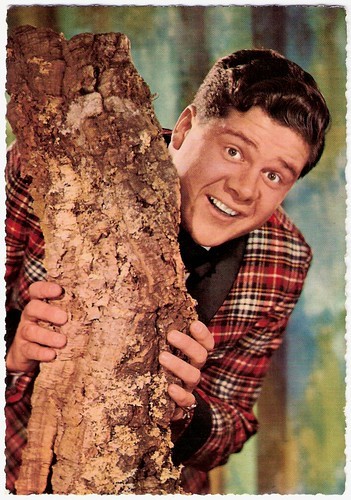
German postcard by Krüger, no. 902/83. Photo: Polydor / Filipp.
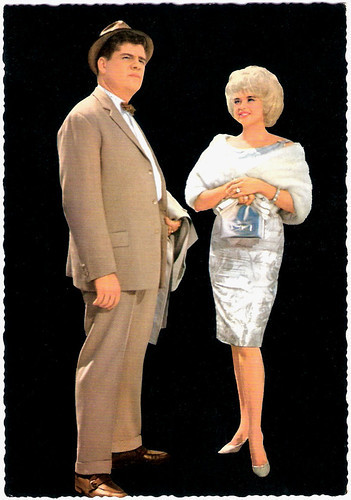
German postcard by Krüger, no. 902/219. Photo: Bernard of Hollywood (credited on the postcard). Possibly made for Heimweh nach St. Pauli (Werner Jacobs, 1963) in which he and Jayne Mansfield both played supporting parts. However, IMDb credits Lothar Winkler as the stills photographer of this Schlager film in which Mansfield sings the classic Snicksnack Snucklechen.
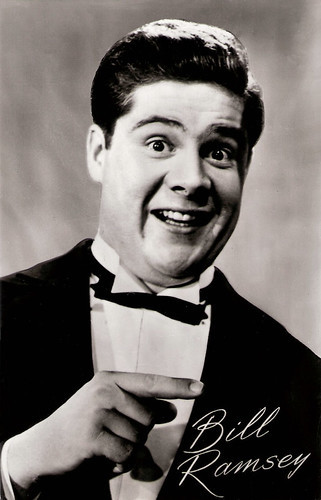
Dutch postcard by Uitgeverij Takken, Utrecht, no. AX 5011.
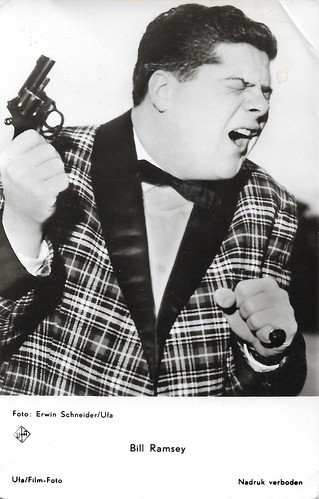
Dutch postcard by Gebr. Spanjersberg, Dutch licence holder for Ufa/Film-Foto. Photo: Erwin Schneider/ Ufa.
The Man With the Black Voice
William McCreery Ramsey, called Bill, was born in Cincinnati, Ohio in 1931. He was the son of a teacher and an advertising manager for Procter & Gamble.
In his youth, Bill sang in a college dance band. He began to study sociology and business from 1949 to 1951 at Yale University in New Haven and sang jazz, Swing, and Blues in the evenings. His greatest influences were Count Basie, Nat King Cole , Duke Ellington, and Louis Jordan.
Due to the Korean War, compulsory military service was again introduced in the US and Ramsey served with the US Air Force in Germany.
During this period, he appeared in clubs like Jazzkeller (Jazz Cellar) in Frankfurt/Main and was discovered by an employee of the American Forces Network (AFN) and hired to entertain troops. There Ramsey advanced to executive producer and had, although still in service, more time for appearances at festivals.
As of 1953, he appeared with, among others, Ernst Mosch, Paul Kuhn, and James Last. In 1955, the jazz pianist and music producer Heinz Gietz organised an appearance with the public broadcaster Hessischer Rundfunk for Ramsey.
Then he appeared for the musical film Liebe, Tanz und 1000 Schlager/Love, dance and 1000 hits (Paul Martin, 1955) with Peter Alexander and Caterina Valente .
Upon his discharge from the military, he continued his studies in America. In 1957 Ramsey returned to Germany and continued his studies in Frankfurt.
Producer Heinz Gietz took Ramsey under contract in 1958 and in the same year his first single Yes, Fanny, ich tu das with Polydor was released. It was a small but respectable success and launched the style, with which ‘the man with the black voice’ would land hits in the future.
His music was oriented on Anglo-American pop hits of the late 1950s. In 1959 he had a #1 hit with Souvenirs. Among Ramsey’s hits were German-language covers of Hank Ballard, The Beatles , Fats Domino, Elvis Presley, and Andy Williams.
In addition, he also performed originals, composed almost exclusively by Heinz Gietz. The ironic texts of Kurt Feltz or Hans Bradtke often commented on current events.
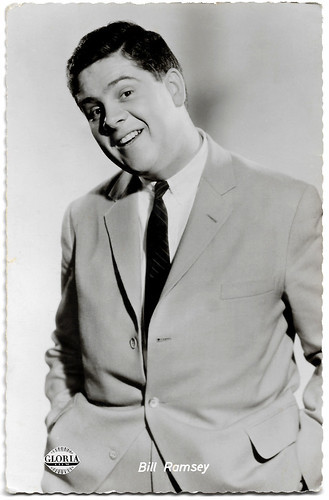
German postcard by Kolibri-Verlag, Minden/Westf., no. 1492. Photo: Alfa / Gloria / Grimm. Bill Ramsey in Adieu, Lebewohl, Goodbye (Paul Martin, 1961).
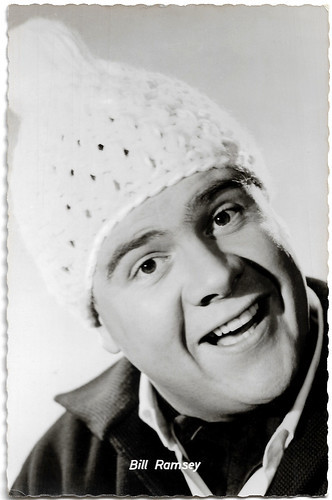
German postcard by Kolibri-Verlag, Minden/Westf., no. 1609. Photo: Europa. Bill Ramsey in Heute gehn wir bummeln/Today we're going for a stroll (Erik Ode, 1961).
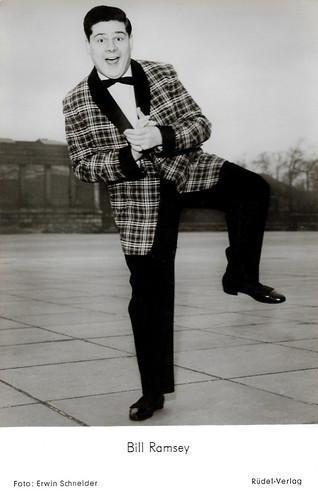
German postcard by Rüdel-Verlag, Hamburg-Bergedorf, no. 2691. Photo: Polydor.
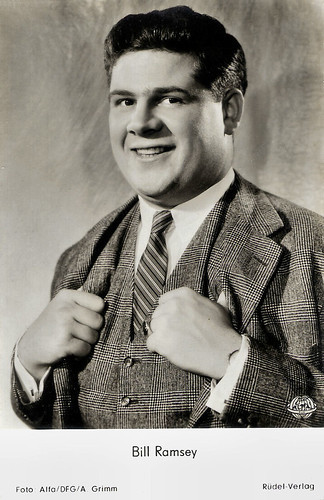
German postcard by Rüdel-Verlag, Hamburg-Bergedorf no. 3558. Photo: Alfa / DFG / Arthur Grimm. Bill Ramsey in Café Oriental (Rudolf Schündler, 1962).
The Comic Sidekick
Bill Ramsey and Gietz signed to the Columbia label of the EMI Group in 1962, where they would continue their success.
His popularity provided numerous appearances in film and television, where he was seen as a singer and in comedy roles.
He starred as the comic sidekick in films like Die Abenteuer des Grafen Bobby/Count Bobby's adventures (Géza von Cziffra, 1961) with Peter Alexander , the crime film Zwischen Schanghai und St. Pauli/Between Shanghai and St. Pauli (Wolfgang Schleif, 1962) with Joachim Hansen , and the Euro-Western Old Shatterhand (Hugo Fregonese, 1964) starring Lex Barker in the title role and Pierre Brice as Winnetou.
Till the middle of the 1960s, Bill Ramsey was a regular in the German charts, but beat music changed the market. In the second half of the 1960s, Ramsey took up predominantly English-language songs and dedicated himself again to jazz and blues. In this musically varied decade, he presented operetta, musical, and beat songs as well as an LP with Children’s songs.
Ramsey changed to Heinz Gietz’s record company Cornet in 1966, and later in the same year to Polydor. Ramsey appeared on different labels in the 1970s.
On TV, he moderated such shows as Hits for Schlappohren (1971) and Talent Shed (1974-1980).
In the cinema, he was seen in the box-office hit Die Schweizermacher/The Swissmakers (Rolf Lyssy, 1978) with Emil Steinberger. The comedy deals with the many woes of foreigners who decide to obtain Swiss nationality but are forced to deal with bureaucratic and cultural barriers. Die Schweizermacher is one of the most successful Swiss films ever.
Ramsey was a lecturer for many years at Hamburg University for Music and Performing Arts. He kept appearing regularly as a pop and jazz singer, mostly in duet with the guitarist Juraj Galan, with whom he released several albums. The duo's LP 'Live in the House of Commons' won the German record critics prize.
Bill Ramsey was also the host of Radio HR2’s Swingtime. In 2008 and 2009 he was on tour with Max Greger and Hugo Strasser as Swing legends. Since 1984, Bill Ramsey was a German citizen. He lived occasionally in Zurich, later in Wiesbaden, and since 1991 with his fourth wife Petra in Hamburg. His widow is a doctor and worked as his manager.
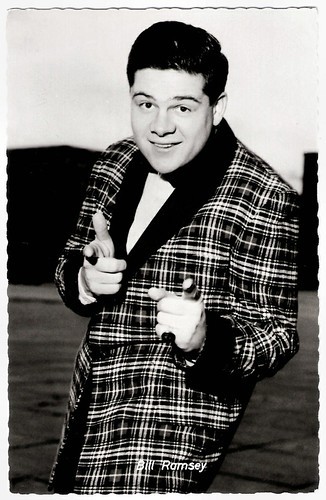
German postcard by Kolibri-Verlag G.m.b.H., Minden-Westf., no. 1256. Photo: Erwin Schneider.
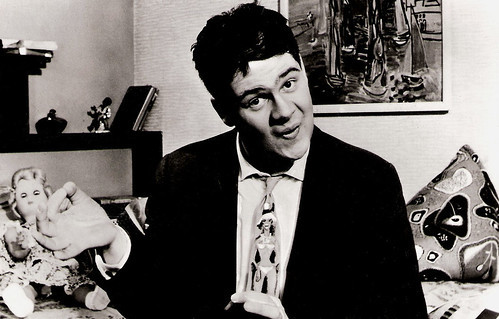
Dutch postcard by Gebr. Spanjersberg, Rotterdam, no. 667.
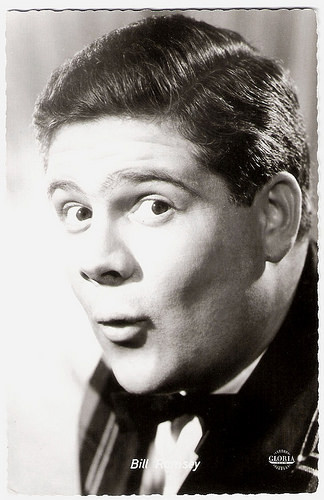
German postcard by Kolibri-Verlag G.m.b.H., Minden-Westf., no. 1524. Photo: Arthur Grimm / Alfa / Gloria. Publicity still for Adieu, Lebewohl, Goodbye (Paul Martin, 1961).
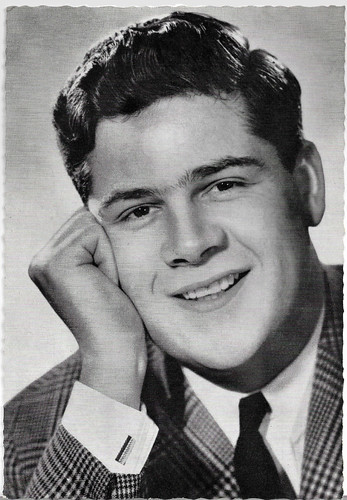
German postcard by Filmbilder-Vertrieb Ernst Freihoff, Essen, no. 735. Photo: Polydor.
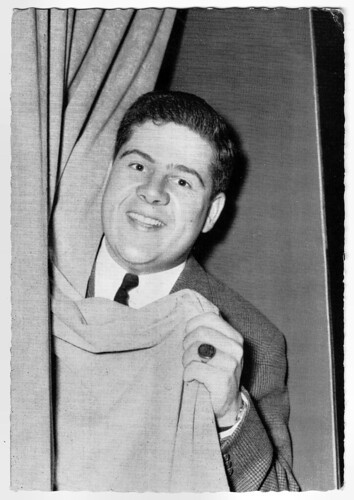
German postcard by Filmbilder-Vertrieb Ernst Freihoff, Essen, no. 766. Photo: Bellé.
Source: Wikipedia (English and German) and.

German postcard by Krüger, no. 902/83. Photo: Polydor / Filipp.

German postcard by Krüger, no. 902/219. Photo: Bernard of Hollywood (credited on the postcard). Possibly made for Heimweh nach St. Pauli (Werner Jacobs, 1963) in which he and Jayne Mansfield both played supporting parts. However, IMDb credits Lothar Winkler as the stills photographer of this Schlager film in which Mansfield sings the classic Snicksnack Snucklechen.

Dutch postcard by Uitgeverij Takken, Utrecht, no. AX 5011.

Dutch postcard by Gebr. Spanjersberg, Dutch licence holder for Ufa/Film-Foto. Photo: Erwin Schneider/ Ufa.
The Man With the Black Voice
William McCreery Ramsey, called Bill, was born in Cincinnati, Ohio in 1931. He was the son of a teacher and an advertising manager for Procter & Gamble.
In his youth, Bill sang in a college dance band. He began to study sociology and business from 1949 to 1951 at Yale University in New Haven and sang jazz, Swing, and Blues in the evenings. His greatest influences were Count Basie, Nat King Cole , Duke Ellington, and Louis Jordan.
Due to the Korean War, compulsory military service was again introduced in the US and Ramsey served with the US Air Force in Germany.
During this period, he appeared in clubs like Jazzkeller (Jazz Cellar) in Frankfurt/Main and was discovered by an employee of the American Forces Network (AFN) and hired to entertain troops. There Ramsey advanced to executive producer and had, although still in service, more time for appearances at festivals.
As of 1953, he appeared with, among others, Ernst Mosch, Paul Kuhn, and James Last. In 1955, the jazz pianist and music producer Heinz Gietz organised an appearance with the public broadcaster Hessischer Rundfunk for Ramsey.
Then he appeared for the musical film Liebe, Tanz und 1000 Schlager/Love, dance and 1000 hits (Paul Martin, 1955) with Peter Alexander and Caterina Valente .
Upon his discharge from the military, he continued his studies in America. In 1957 Ramsey returned to Germany and continued his studies in Frankfurt.
Producer Heinz Gietz took Ramsey under contract in 1958 and in the same year his first single Yes, Fanny, ich tu das with Polydor was released. It was a small but respectable success and launched the style, with which ‘the man with the black voice’ would land hits in the future.
His music was oriented on Anglo-American pop hits of the late 1950s. In 1959 he had a #1 hit with Souvenirs. Among Ramsey’s hits were German-language covers of Hank Ballard, The Beatles , Fats Domino, Elvis Presley, and Andy Williams.
In addition, he also performed originals, composed almost exclusively by Heinz Gietz. The ironic texts of Kurt Feltz or Hans Bradtke often commented on current events.

German postcard by Kolibri-Verlag, Minden/Westf., no. 1492. Photo: Alfa / Gloria / Grimm. Bill Ramsey in Adieu, Lebewohl, Goodbye (Paul Martin, 1961).

German postcard by Kolibri-Verlag, Minden/Westf., no. 1609. Photo: Europa. Bill Ramsey in Heute gehn wir bummeln/Today we're going for a stroll (Erik Ode, 1961).

German postcard by Rüdel-Verlag, Hamburg-Bergedorf, no. 2691. Photo: Polydor.

German postcard by Rüdel-Verlag, Hamburg-Bergedorf no. 3558. Photo: Alfa / DFG / Arthur Grimm. Bill Ramsey in Café Oriental (Rudolf Schündler, 1962).
The Comic Sidekick
Bill Ramsey and Gietz signed to the Columbia label of the EMI Group in 1962, where they would continue their success.
His popularity provided numerous appearances in film and television, where he was seen as a singer and in comedy roles.
He starred as the comic sidekick in films like Die Abenteuer des Grafen Bobby/Count Bobby's adventures (Géza von Cziffra, 1961) with Peter Alexander , the crime film Zwischen Schanghai und St. Pauli/Between Shanghai and St. Pauli (Wolfgang Schleif, 1962) with Joachim Hansen , and the Euro-Western Old Shatterhand (Hugo Fregonese, 1964) starring Lex Barker in the title role and Pierre Brice as Winnetou.
Till the middle of the 1960s, Bill Ramsey was a regular in the German charts, but beat music changed the market. In the second half of the 1960s, Ramsey took up predominantly English-language songs and dedicated himself again to jazz and blues. In this musically varied decade, he presented operetta, musical, and beat songs as well as an LP with Children’s songs.
Ramsey changed to Heinz Gietz’s record company Cornet in 1966, and later in the same year to Polydor. Ramsey appeared on different labels in the 1970s.
On TV, he moderated such shows as Hits for Schlappohren (1971) and Talent Shed (1974-1980).
In the cinema, he was seen in the box-office hit Die Schweizermacher/The Swissmakers (Rolf Lyssy, 1978) with Emil Steinberger. The comedy deals with the many woes of foreigners who decide to obtain Swiss nationality but are forced to deal with bureaucratic and cultural barriers. Die Schweizermacher is one of the most successful Swiss films ever.
Ramsey was a lecturer for many years at Hamburg University for Music and Performing Arts. He kept appearing regularly as a pop and jazz singer, mostly in duet with the guitarist Juraj Galan, with whom he released several albums. The duo's LP 'Live in the House of Commons' won the German record critics prize.
Bill Ramsey was also the host of Radio HR2’s Swingtime. In 2008 and 2009 he was on tour with Max Greger and Hugo Strasser as Swing legends. Since 1984, Bill Ramsey was a German citizen. He lived occasionally in Zurich, later in Wiesbaden, and since 1991 with his fourth wife Petra in Hamburg. His widow is a doctor and worked as his manager.

German postcard by Kolibri-Verlag G.m.b.H., Minden-Westf., no. 1256. Photo: Erwin Schneider.

Dutch postcard by Gebr. Spanjersberg, Rotterdam, no. 667.

German postcard by Kolibri-Verlag G.m.b.H., Minden-Westf., no. 1524. Photo: Arthur Grimm / Alfa / Gloria. Publicity still for Adieu, Lebewohl, Goodbye (Paul Martin, 1961).

German postcard by Filmbilder-Vertrieb Ernst Freihoff, Essen, no. 735. Photo: Polydor.

German postcard by Filmbilder-Vertrieb Ernst Freihoff, Essen, no. 766. Photo: Bellé.
Source: Wikipedia (English and German) and.
Published on July 07, 2021 22:00
July 6, 2021
Johnny Dorelli
Johnny Dorelli (1937) is an Italian actor, singer, and television host. He had his breakthrough at the San Remo festival. He also made his mark in Italian comedy, but later also proved himself in dramas.
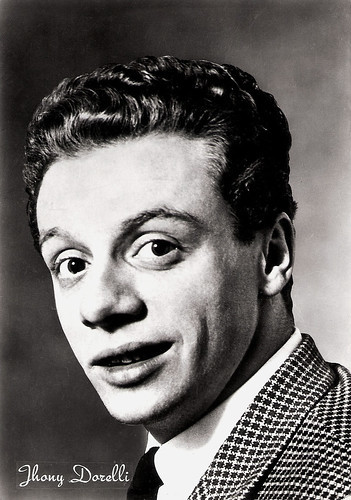
Italian postcard by Rotalfoto, no. 716.
Winning the Sanremo Festival
Dorelli was born Giorgio Guidi in 1937 in Meda, Italy. In 1946 he moved to New York with his family, where his father, Nino D'Aurelio (born Aurelio Guidi), found work as an opera singer.
Dorelli studied double bass and piano at the High School of Music and Art in New York. He returned to Italy in 1955. He debuted as a singer in the late 1950s for the CGD label. In 1958 he won the Sanremo Festival in duo with Domenico Modugno, with the songs 'Nel blu dipinto di blu' (aka 'Volare') and 'Piove' ('Ciao ciao bambina').
Dorelli's most famous songs are 'Calypso Melody' (1957), 'Julia' (1958), 'Boccuccia Di Rosa' (Pink Lips) (1958), 'Love In Portofino' (1959), 'Lettera A Pinocchio' (1959), 'Montecarlo' (1961), 'Speedy Gonzales' (1962), 'Era Settembre' (1964), 'Probabilmente' (1965), 'Al Buio Sto Sognando' (1966), and 'Solo Più Che Mai' (Strangers In The Night) (1966).
'L'immensità' earned Dorelli ninth place at the 1967 edition of the Sanremo Song Festival. Later, he had hits with 'Arriva La Bomba' (1967), 'E Penso A Te' (1971), and 'Aggiungi Un Posto A Tavola' (1975). As a (popular and jazz) crooner, he sang numerous songs in Italian and in English live on television shows during the 1960s.
His greatest stage success was the musical 'Aggiungi un posto a tavola', which was also performed at the Adelphi Theatre in London's West End in an English version entitled 'Beyond the Rainbow' in 1978. After a period of absence, he returned to success in the 1980s.
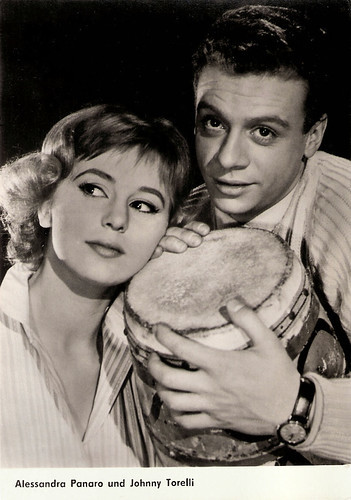
East-German postcard by VEB Progress Film-Vertrieb, Berlin, no. 1439, 1961. Alessandra Panaro and Johnny Dorelli in Totò, Peppino e le fanatiche/Toto, Peppino and the Fanatics (Mario Mattoli, 1958).
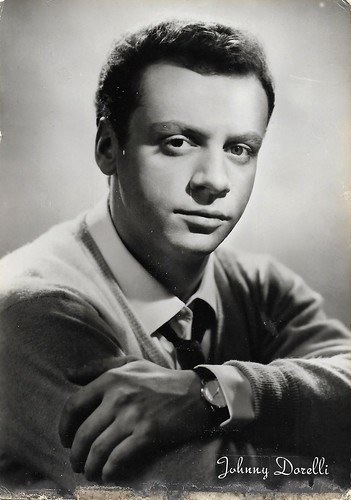
Italian postcard by Rotalfoto, no. 1003.
An ironic and easygoing style
On the big screen, Johnny Dorelli first had small parts in comedies shot at the end of the 1950s. An attempt to launch him as a protagonist was the film Arriva Dorellik/How to Kill 400 Duponts (Steno, 1967). The character of the contract killer Dorellik, who had also previously been presented by him in a number of television programmes, was inspired by the comic strip 'Diabolik'.
Dorelli made his mark in the Italian comedy genre in such mediocre but locally successful films as Una sera c'incontrammo/One evening we met (Piero Schivazappa, 1975), Spogliamoci così senza pudor/Love in 4 Easy Lessons (Sergio Martino, 1976) opposite Ursula Andress , La presidentessa/The president (Luciano Salce, 1977) starring Mariangela Melato, Sesso e volentieri (Dino Risi, 1982) with Laura Antonelli and Gloria Guida, and A tu per tu/Face to face (Sergio Corbucci, 1984).
He also acted in dramatic roles as in Pane e cioccolata/Bread and Chocolate (Franco Brusati, 1973) about the misadventures of an Italian immigrant ( Nino Manfredi ) to Switzerland, L'Agnese va a morire/And Agnes Chose to Die (Giuliano Montaldo, 1976) starring Ingrid Thulin, and Il mostro/The Fiend (Luigi Zampa, 1977) with Sydne Rome .
Dorelli gave some memorable mature performances, in which he managed to combine his ironic and easygoing style with deep humanity. An example is Marco Vicario's film Il cappotto di AstrakanThe Persian Lamb Coat (1979) with Andréa Ferréol, based on a novel by Piero Chiara.
Another example is State buoni se potete/Be good, if you can (Luigi Magni, 1983), in which he played the role of San Filippo Neri, with music by Angelo Branduardi. Notable was also his part opposite Giuliano Gemma in Ciao nemico (E.B. Clucher aka Enzo Barboni, 1981), a comedy set during the Second World War. In 2005, Dorelli played his final film part in Pupi Avati's Ma quando arrivano le ragazze?/When Do the Girls Show Up?.
In 2007 he returned after 38 years to the stage of Sanremo as a participant with the song 'Meglio così', written by Gianni Ferrio and Giorgio Calabrese, and accompanied by jazz pianist Stefano Bollani and the orchestra conducted by Ferrio. For his typical singing style, Dorelli has often been imitated by musical comedians and impersonators.
After a relationship with Lauretta Masiero (1959-1968), he was married to Catherine Spaak (1972–1978). In 1981, he married Gloria Guida, a former model, and actress in Italian comedies of the 1970s. He is the father of Gianluca Guidi with Lauretta Masiero, Gabriele Guidi with Catherine Spaak , and Guendalina Guidi with Gloria Guida. He is also the grandfather of Giacomo and Giulio Guidi (Gianluca's sons).
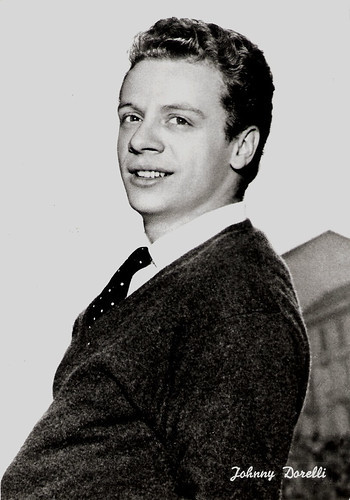
Italian postcard by Bromofoto, Milano, no. 1700.
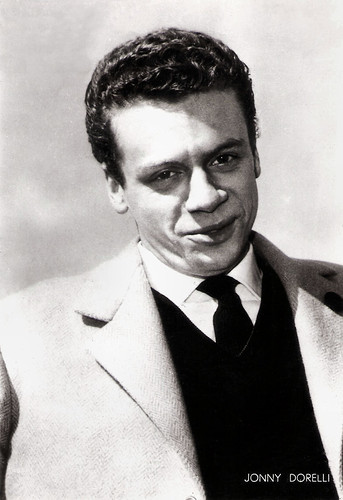
Italian postcard, no. 433.
Sources: Wikipedia (Italian and English), and .

Italian postcard by Rotalfoto, no. 716.
Winning the Sanremo Festival
Dorelli was born Giorgio Guidi in 1937 in Meda, Italy. In 1946 he moved to New York with his family, where his father, Nino D'Aurelio (born Aurelio Guidi), found work as an opera singer.
Dorelli studied double bass and piano at the High School of Music and Art in New York. He returned to Italy in 1955. He debuted as a singer in the late 1950s for the CGD label. In 1958 he won the Sanremo Festival in duo with Domenico Modugno, with the songs 'Nel blu dipinto di blu' (aka 'Volare') and 'Piove' ('Ciao ciao bambina').
Dorelli's most famous songs are 'Calypso Melody' (1957), 'Julia' (1958), 'Boccuccia Di Rosa' (Pink Lips) (1958), 'Love In Portofino' (1959), 'Lettera A Pinocchio' (1959), 'Montecarlo' (1961), 'Speedy Gonzales' (1962), 'Era Settembre' (1964), 'Probabilmente' (1965), 'Al Buio Sto Sognando' (1966), and 'Solo Più Che Mai' (Strangers In The Night) (1966).
'L'immensità' earned Dorelli ninth place at the 1967 edition of the Sanremo Song Festival. Later, he had hits with 'Arriva La Bomba' (1967), 'E Penso A Te' (1971), and 'Aggiungi Un Posto A Tavola' (1975). As a (popular and jazz) crooner, he sang numerous songs in Italian and in English live on television shows during the 1960s.
His greatest stage success was the musical 'Aggiungi un posto a tavola', which was also performed at the Adelphi Theatre in London's West End in an English version entitled 'Beyond the Rainbow' in 1978. After a period of absence, he returned to success in the 1980s.

East-German postcard by VEB Progress Film-Vertrieb, Berlin, no. 1439, 1961. Alessandra Panaro and Johnny Dorelli in Totò, Peppino e le fanatiche/Toto, Peppino and the Fanatics (Mario Mattoli, 1958).

Italian postcard by Rotalfoto, no. 1003.
An ironic and easygoing style
On the big screen, Johnny Dorelli first had small parts in comedies shot at the end of the 1950s. An attempt to launch him as a protagonist was the film Arriva Dorellik/How to Kill 400 Duponts (Steno, 1967). The character of the contract killer Dorellik, who had also previously been presented by him in a number of television programmes, was inspired by the comic strip 'Diabolik'.
Dorelli made his mark in the Italian comedy genre in such mediocre but locally successful films as Una sera c'incontrammo/One evening we met (Piero Schivazappa, 1975), Spogliamoci così senza pudor/Love in 4 Easy Lessons (Sergio Martino, 1976) opposite Ursula Andress , La presidentessa/The president (Luciano Salce, 1977) starring Mariangela Melato, Sesso e volentieri (Dino Risi, 1982) with Laura Antonelli and Gloria Guida, and A tu per tu/Face to face (Sergio Corbucci, 1984).
He also acted in dramatic roles as in Pane e cioccolata/Bread and Chocolate (Franco Brusati, 1973) about the misadventures of an Italian immigrant ( Nino Manfredi ) to Switzerland, L'Agnese va a morire/And Agnes Chose to Die (Giuliano Montaldo, 1976) starring Ingrid Thulin, and Il mostro/The Fiend (Luigi Zampa, 1977) with Sydne Rome .
Dorelli gave some memorable mature performances, in which he managed to combine his ironic and easygoing style with deep humanity. An example is Marco Vicario's film Il cappotto di AstrakanThe Persian Lamb Coat (1979) with Andréa Ferréol, based on a novel by Piero Chiara.
Another example is State buoni se potete/Be good, if you can (Luigi Magni, 1983), in which he played the role of San Filippo Neri, with music by Angelo Branduardi. Notable was also his part opposite Giuliano Gemma in Ciao nemico (E.B. Clucher aka Enzo Barboni, 1981), a comedy set during the Second World War. In 2005, Dorelli played his final film part in Pupi Avati's Ma quando arrivano le ragazze?/When Do the Girls Show Up?.
In 2007 he returned after 38 years to the stage of Sanremo as a participant with the song 'Meglio così', written by Gianni Ferrio and Giorgio Calabrese, and accompanied by jazz pianist Stefano Bollani and the orchestra conducted by Ferrio. For his typical singing style, Dorelli has often been imitated by musical comedians and impersonators.
After a relationship with Lauretta Masiero (1959-1968), he was married to Catherine Spaak (1972–1978). In 1981, he married Gloria Guida, a former model, and actress in Italian comedies of the 1970s. He is the father of Gianluca Guidi with Lauretta Masiero, Gabriele Guidi with Catherine Spaak , and Guendalina Guidi with Gloria Guida. He is also the grandfather of Giacomo and Giulio Guidi (Gianluca's sons).

Italian postcard by Bromofoto, Milano, no. 1700.

Italian postcard, no. 433.
Sources: Wikipedia (Italian and English), and .
Published on July 06, 2021 22:00
July 5, 2021
Orane Demazis
Orane Demazis (1904-1991) was a French actress. She is best remembered for her role as Fanny in the Marseille trilogy by Marcel Pagnol.
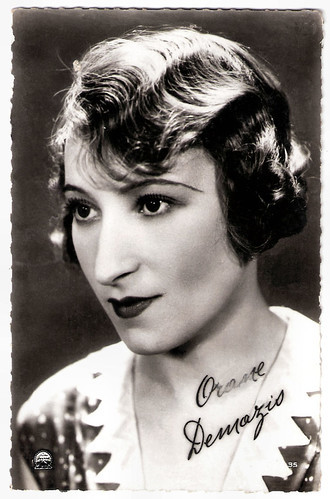
French postcard by Editions et Publications cinématographiques, no. 35. Photo: Paramount.
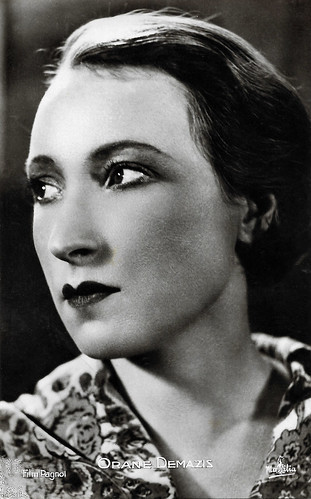
French postcard by Massilia. Photo: Film Pagnol.

French postcard, no. 522.
The Marseille film trilogy
Orane Demazis was born Henriette Marie Louise Burgart in 1904 in Oran, French Algeria, in a family of Alsatian origin. Demazis entered the Paris Conservatoire National Supérieur d'Art Dramatique in 1919. She formed her stage name after her birthplace of Oran and the name of Mazis, another nearby town.
Upon graduating in 1922, she joined the Théâtre de l'Atelier cast directed by Charles Dullin. Between 1922 and 1926, she starred in 'Carmosine' by Alfred de Musset, 'L'Occasion' by Prosper Mérimée, 'Chacun sa vérité' by Luigi Pirandello, 'Petite Lumière et l'Ourse' and 'Huon de Bordeaux' by Alexandre Arnoux, and 'Voulez-vous jouer avec moâ' by Marcel Achard.
Her encounter with Marcel Pagnol in 1923 marked a turning point in her career. The two fell in love and he created some of her most famous roles. In 1926, he hired her to act in his play 'Jazz'. Then he created for her the role of Fanny in 'Marius' (1929), 'Fanny' (1931), and the film Caesar (Marcel Pagnol, 1936). In 1933 Demazis and Pagnol had a son, Jean-Pierre Burgart, but Pagnol could not recognise him while his wife Simonne Collin refused a divorce.
Orane Demazis repeated her role as Fanny in the film adaptation Marius (Alexander Korda, 1931). The film was made by Korda for the French subsidiary of Paramount Pictures and was a huge success. The second part of the Marseille film trilogy, Fanny (Marc Allégret, 1932) was also a box office success in France and is still considered to be a classic of French cinema.
Demazis was the star of Angèle (1934), a drama film directed, produced, and written by Marcel Pagnol, based on the novel 'Un de Baumugnes' by Jean Giono. That same year, she played Eponine in Les Misérables (Raymond Bernard, 1934), the excellent film adaptation of Victor Hugo's 1862 novel of the same name.
Les Misérables, starring Harry Baur as Jean Valjean and Charles Vanel as Javert, lasts four and a half hours and is considered by critics to be the greatest adaptation of the novel, due to its more in-depth development of the themes and characters, in comparison with most shorter adaptations. It was released as three films that premiered over a period of three weeks.
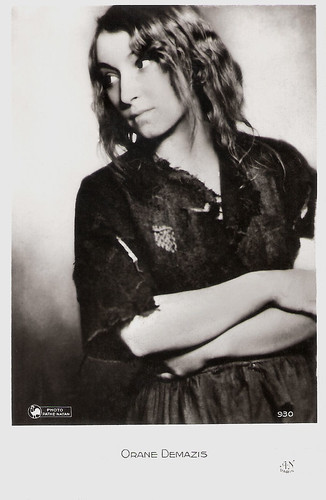
French postcard by A.N., Paris, no. 930. Photo: Pathé Natan. Orane Demazis as Eponine in Les Misérables (Raymond Bernard, 1934), based on the novel by Victor Hugo.
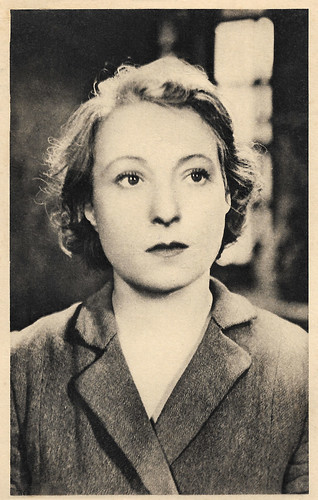
French postcard by Crépa, Editeur, Paris. Photo: Pierre Méré. Orane Demazis in the role of Arsul in Regain/Harvest (Marcel Pagnol, 1937).
Her career on the sidetrack
Then Orane Demazis appeared opposite Raimu in César (1936), written and directed by Marcel Pagnol. It's the final part of his Marseille trilogy, which began with the film Marius and was followed by Fanny. Unlike the other two films in the trilogy, César was not based on a play by Pagnol but written directly as a film script. In 1946 Pagnol adapted the script as a stage play.
Pagnol also directed her in Regain/Harvest (Marcel Pagnol, 1937) in which she co-starred with Fernandel , Marguerite Moreno , and Gabriel Gabrio , and in Le schpountz/Heartbeat (Marcel Pagnol, 1938) starring Fernandel . She also appeared in the drama Le feu de paille/Fire in the Straw (Jean Benoît-Lévy, 1939) starring Lucien Baroux .
In 1938, Orane Demazis' relationship with Marcel Pagnol came to an end. This break with Pagnol and the outbreak of the Second World War put her career on the sidetrack. In the next decades, she was rarely seen in the cinema, but she did appear in three films set in Provence, her favorite film location. One of these was Bagarres/Wench (Henri Calef, 1948) with Maria Casares and Roger Pigaut , and another one was La caraque blonde (Jacqueline Audry, 1953), starring Tilda Thamar , and Roger Pigaut .
This was followed by a long period without films. In the 1970s, she made a modest comeback. She appeared in Rude Journée pour la reine/Rough Day for the Queen (René Allio, 1973) with Simone Signoret . Then she was asked by famous film author Luis Buñuel, to appear in his surreal comedy Le Fantôme de la liberté/The Specter of Freedom (Luis Buñuel, 1974). André Téchiné cast her in his film Souvenirs d'en France/French Provincial (André Téchiné, 1975) starring Jeanne Moreau .
The television world also called on her several times. She appeared in the clever film adaptation of Colette 's autobiographical novel, La Naissance du jour/Break of Day (1980) starring Danièle Delorme , the only television film Jacques Demy ever made. Her final feature film was Bastien, Bastienne (Michel Andrieu, 1980) with Juliet Berto, and Anna Prucnal . Orane Demazis died in 1991 at the age of 87 in Paris. She shared her life with Pagnol from 1925 to 1938. Her son is the painter and writer Jean-Pierre Burgart.
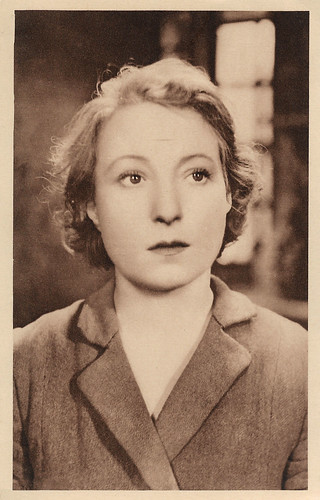
French postcard by Crépa, Editeur, Paris. Photo: Pierre Méré. Orane Demazis in the role of Arsul in Regain/Harvest (Marcel Pagnol, 1937).
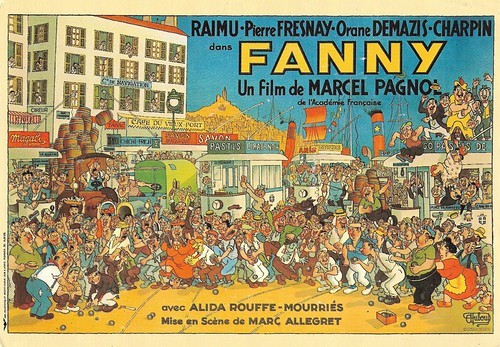
French postcard by CPM / Jean Dubout, 1982. Poster (1950) by Albert Dubout for Fanny (Marc Allégret, 1932), based on the play by Marcel Pagnol.
Sources: Wikipedia (English, Dutch and French) and .

French postcard by Editions et Publications cinématographiques, no. 35. Photo: Paramount.

French postcard by Massilia. Photo: Film Pagnol.

French postcard, no. 522.
The Marseille film trilogy
Orane Demazis was born Henriette Marie Louise Burgart in 1904 in Oran, French Algeria, in a family of Alsatian origin. Demazis entered the Paris Conservatoire National Supérieur d'Art Dramatique in 1919. She formed her stage name after her birthplace of Oran and the name of Mazis, another nearby town.
Upon graduating in 1922, she joined the Théâtre de l'Atelier cast directed by Charles Dullin. Between 1922 and 1926, she starred in 'Carmosine' by Alfred de Musset, 'L'Occasion' by Prosper Mérimée, 'Chacun sa vérité' by Luigi Pirandello, 'Petite Lumière et l'Ourse' and 'Huon de Bordeaux' by Alexandre Arnoux, and 'Voulez-vous jouer avec moâ' by Marcel Achard.
Her encounter with Marcel Pagnol in 1923 marked a turning point in her career. The two fell in love and he created some of her most famous roles. In 1926, he hired her to act in his play 'Jazz'. Then he created for her the role of Fanny in 'Marius' (1929), 'Fanny' (1931), and the film Caesar (Marcel Pagnol, 1936). In 1933 Demazis and Pagnol had a son, Jean-Pierre Burgart, but Pagnol could not recognise him while his wife Simonne Collin refused a divorce.
Orane Demazis repeated her role as Fanny in the film adaptation Marius (Alexander Korda, 1931). The film was made by Korda for the French subsidiary of Paramount Pictures and was a huge success. The second part of the Marseille film trilogy, Fanny (Marc Allégret, 1932) was also a box office success in France and is still considered to be a classic of French cinema.
Demazis was the star of Angèle (1934), a drama film directed, produced, and written by Marcel Pagnol, based on the novel 'Un de Baumugnes' by Jean Giono. That same year, she played Eponine in Les Misérables (Raymond Bernard, 1934), the excellent film adaptation of Victor Hugo's 1862 novel of the same name.
Les Misérables, starring Harry Baur as Jean Valjean and Charles Vanel as Javert, lasts four and a half hours and is considered by critics to be the greatest adaptation of the novel, due to its more in-depth development of the themes and characters, in comparison with most shorter adaptations. It was released as three films that premiered over a period of three weeks.

French postcard by A.N., Paris, no. 930. Photo: Pathé Natan. Orane Demazis as Eponine in Les Misérables (Raymond Bernard, 1934), based on the novel by Victor Hugo.

French postcard by Crépa, Editeur, Paris. Photo: Pierre Méré. Orane Demazis in the role of Arsul in Regain/Harvest (Marcel Pagnol, 1937).
Her career on the sidetrack
Then Orane Demazis appeared opposite Raimu in César (1936), written and directed by Marcel Pagnol. It's the final part of his Marseille trilogy, which began with the film Marius and was followed by Fanny. Unlike the other two films in the trilogy, César was not based on a play by Pagnol but written directly as a film script. In 1946 Pagnol adapted the script as a stage play.
Pagnol also directed her in Regain/Harvest (Marcel Pagnol, 1937) in which she co-starred with Fernandel , Marguerite Moreno , and Gabriel Gabrio , and in Le schpountz/Heartbeat (Marcel Pagnol, 1938) starring Fernandel . She also appeared in the drama Le feu de paille/Fire in the Straw (Jean Benoît-Lévy, 1939) starring Lucien Baroux .
In 1938, Orane Demazis' relationship with Marcel Pagnol came to an end. This break with Pagnol and the outbreak of the Second World War put her career on the sidetrack. In the next decades, she was rarely seen in the cinema, but she did appear in three films set in Provence, her favorite film location. One of these was Bagarres/Wench (Henri Calef, 1948) with Maria Casares and Roger Pigaut , and another one was La caraque blonde (Jacqueline Audry, 1953), starring Tilda Thamar , and Roger Pigaut .
This was followed by a long period without films. In the 1970s, she made a modest comeback. She appeared in Rude Journée pour la reine/Rough Day for the Queen (René Allio, 1973) with Simone Signoret . Then she was asked by famous film author Luis Buñuel, to appear in his surreal comedy Le Fantôme de la liberté/The Specter of Freedom (Luis Buñuel, 1974). André Téchiné cast her in his film Souvenirs d'en France/French Provincial (André Téchiné, 1975) starring Jeanne Moreau .
The television world also called on her several times. She appeared in the clever film adaptation of Colette 's autobiographical novel, La Naissance du jour/Break of Day (1980) starring Danièle Delorme , the only television film Jacques Demy ever made. Her final feature film was Bastien, Bastienne (Michel Andrieu, 1980) with Juliet Berto, and Anna Prucnal . Orane Demazis died in 1991 at the age of 87 in Paris. She shared her life with Pagnol from 1925 to 1938. Her son is the painter and writer Jean-Pierre Burgart.

French postcard by Crépa, Editeur, Paris. Photo: Pierre Méré. Orane Demazis in the role of Arsul in Regain/Harvest (Marcel Pagnol, 1937).

French postcard by CPM / Jean Dubout, 1982. Poster (1950) by Albert Dubout for Fanny (Marc Allégret, 1932), based on the play by Marcel Pagnol.
Sources: Wikipedia (English, Dutch and French) and .
Published on July 05, 2021 22:00
July 4, 2021
The Autochrome Lumière
Auguste and Louis Lumière are best known for their invention of the Cinématographe in 1895. However, they had also been experimenting with colour photography for several years. Their autochrome Lumière is the first practicable method of colour photography. The Lumière brothers began commercial manufacture of autochrome plates in 1907. We found six French cards from the 1990s with autochromes taken by the Lumières in 1906.

French postcard by Éditions AGEP, Marseille. Photo: Louis and Auguste Lumière, 1906.
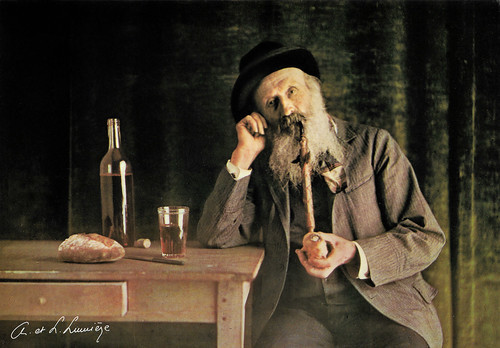
French postcard by Éditions AGEP, Marseille. Photo: Louis and Auguste Lumière, 1906.
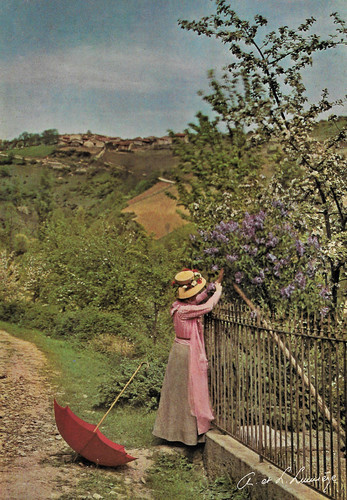
French postcard by Éditions AGEP, Marseille. Photo: Louis and Auguste Lumière, 1906.
News of the discovery spread quickly
When photography was first introduced, a sense of wonder was tempered by disappointment that colours could not be reliably captured. The search for a solution became photography’s ‘Holy Grail’. In 1903, Auguste and Louis Lumière in France patented the 'Autochrome Lumière' and presented their research into colour photography to the Académie des Sciences in 1904.
Three years later the Lumière brothers had perfected their process and began the commercial manufacture of autochrome plates at the Lumière factory in Lyon. The first public demonstration of the autochrome process took place on 10 June 1907, at the offices of the French newspaper L‘Illustration.
The event was a triumph. News of the discovery spread quickly and critical response was rapturous. Upon seeing his first autochrome, for example, the eminent photographer Alfred Stieglitz could scarcely contain his enthusiasm: "The possibilities of the process seem to be unlimited and soon the world will be colour-mad, and Lumière will be responsible."
Autochrome was an additive colour 'mosaic screen plate' process. It was the principal colour photography process in use before the advent of subtractive colour film in the mid-1930s. Prior to the Lumiere brothers, Louis Ducos du Hauron utilised the separation technique to create colour images on paper with screen plates, producing natural colours through superimposition, which would become the foundation of all commercial colour photography.
Descendants of photographer Antoine Lumiere, inventors Louis and Auguste Lumiere utilised Du Hauron's (1869) technique, which had already been improved upon by other inventors such as John Joly (1894) and James William McDonough (1896), making it possible to print photographic images in colour. One of the most broadly used forms of colour photography in the early twentieth century, autochrome was recognised for its aesthetic appeal.
Autochromes continued to be produced as glass plates into the 1930s when film-based versions were introduced, first Lumière Filmcolor sheet film in 1931, then Lumicolor roll film in 1933. Although these soon completely replaced glass plate Autochromes, their triumph was short-lived, as Kodak and Agfa soon began to produce multi-layer subtractive colour films (Kodachrome and Agfacolor Neu respectively).
Nevertheless, the Lumière products had a devoted following, above all in France, and their use persisted long after modern colour films had become available. The final version, Alticolor, was introduced in 1952 and discontinued in 1955, marking the end of the nearly fifty-year-long public life of the Autochrome.
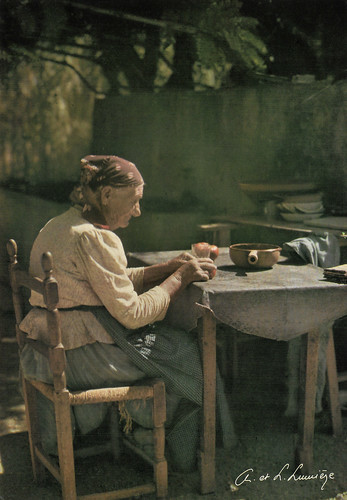
French postcard by Éditions AGEP, Marseille. Photo: Louis and Auguste Lumière, 1906.
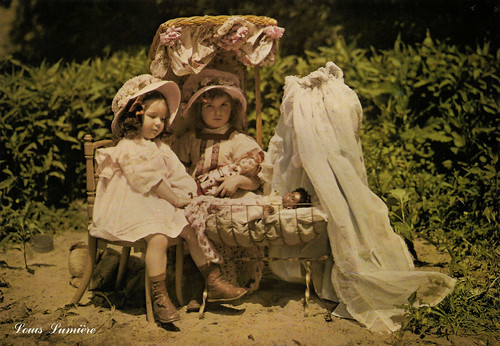
French postcard by Éditions AGEP, Marseille. Photo: Louis Lumière, 1906.
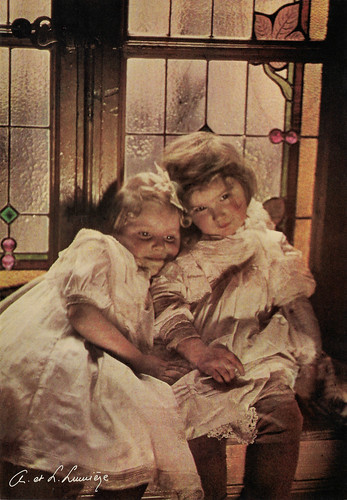
French postcard by Éditions AGEP, Marseille. Photo: Louis and Auguste Lumière, 1906.
Source: Science + Media Museum and Wikipedia.

French postcard by Éditions AGEP, Marseille. Photo: Louis and Auguste Lumière, 1906.

French postcard by Éditions AGEP, Marseille. Photo: Louis and Auguste Lumière, 1906.

French postcard by Éditions AGEP, Marseille. Photo: Louis and Auguste Lumière, 1906.
News of the discovery spread quickly
When photography was first introduced, a sense of wonder was tempered by disappointment that colours could not be reliably captured. The search for a solution became photography’s ‘Holy Grail’. In 1903, Auguste and Louis Lumière in France patented the 'Autochrome Lumière' and presented their research into colour photography to the Académie des Sciences in 1904.
Three years later the Lumière brothers had perfected their process and began the commercial manufacture of autochrome plates at the Lumière factory in Lyon. The first public demonstration of the autochrome process took place on 10 June 1907, at the offices of the French newspaper L‘Illustration.
The event was a triumph. News of the discovery spread quickly and critical response was rapturous. Upon seeing his first autochrome, for example, the eminent photographer Alfred Stieglitz could scarcely contain his enthusiasm: "The possibilities of the process seem to be unlimited and soon the world will be colour-mad, and Lumière will be responsible."
Autochrome was an additive colour 'mosaic screen plate' process. It was the principal colour photography process in use before the advent of subtractive colour film in the mid-1930s. Prior to the Lumiere brothers, Louis Ducos du Hauron utilised the separation technique to create colour images on paper with screen plates, producing natural colours through superimposition, which would become the foundation of all commercial colour photography.
Descendants of photographer Antoine Lumiere, inventors Louis and Auguste Lumiere utilised Du Hauron's (1869) technique, which had already been improved upon by other inventors such as John Joly (1894) and James William McDonough (1896), making it possible to print photographic images in colour. One of the most broadly used forms of colour photography in the early twentieth century, autochrome was recognised for its aesthetic appeal.
Autochromes continued to be produced as glass plates into the 1930s when film-based versions were introduced, first Lumière Filmcolor sheet film in 1931, then Lumicolor roll film in 1933. Although these soon completely replaced glass plate Autochromes, their triumph was short-lived, as Kodak and Agfa soon began to produce multi-layer subtractive colour films (Kodachrome and Agfacolor Neu respectively).
Nevertheless, the Lumière products had a devoted following, above all in France, and their use persisted long after modern colour films had become available. The final version, Alticolor, was introduced in 1952 and discontinued in 1955, marking the end of the nearly fifty-year-long public life of the Autochrome.

French postcard by Éditions AGEP, Marseille. Photo: Louis and Auguste Lumière, 1906.

French postcard by Éditions AGEP, Marseille. Photo: Louis Lumière, 1906.

French postcard by Éditions AGEP, Marseille. Photo: Louis and Auguste Lumière, 1906.
Source: Science + Media Museum and Wikipedia.
Published on July 04, 2021 22:00
July 3, 2021
Lee Marvin
American film and television actor Lee Marvin (1924-1987) began as a supporting player of a generally vicious demeanor, then metamorphosed into a star playing tough, hard-bitten anti-heroes. Known for his gravelly smoke-burnished voice and premature white hair, Marvin initially played villains, soldiers, and other hardboiled characters. A prominent television role was that of Detective Lieutenant Frank Ballinger in the NBC crime series M Squad (1957–1960). He became a major star with Cat Ballou (1965), a comedy Western in which he played dual roles, but his career waned considerably after Paint Your Wagon (1969). For portraying both gunfighter Kid Shelleen and criminal Tim Strawn, he won the Oscar for Best Actor, along with a BAFTA Award, a Golden Globe Award, an NBR Award, and the Silver Bear for Best Actor. Marvin is also remembered for his 'tough guy' characters in The Killers (1964), The Professionals (1966), The Dirty Dozen (1967), Point Blank (1967), and The Big Red One (1980).
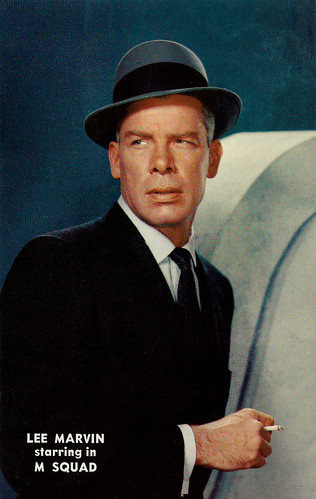
American Mirro-Krome postcard by H.S. Crocker Co. Inc., San Francisco, Calif., no. HSC-305. Lee Marvin in the TV series M Squad (1957). Caption: Lee Marvin plays the role of Lieutenant Ballinger in M Squad, an action-detective series filmed at Revue Studios. In addition to starring in his M Squad series, Lee also appears as a guest star in television specials.
He caught the acting bug
Lamont Waltman Marvin Jr. was born in 1924 in New York City. He was the son of Lamont Waltman Marvin, an advertising executive and later the head of the New York and New England Apple Institute, and Courtenay Washington (née Davidge), a fashion and beauty writer/editor. As with his elder brother, Robert, he was named in honour of Confederate General Robert E. Lee, who was his first cousin, four times removed. His father was a direct descendant of Matthew Marvin Sr., who emigrated from Great Bentley, Essex, England, in 1635, and helped found Hartford, Connecticut.
Marvin studied the violin when he was young. As a teenager, Marvin "spent weekends and spare time hunting deer, puma, wild turkey, and bobwhite in the wilds of the then-uncharted Everglades". He attended Manumit School, a Christian socialist boarding school in Pawling, New York, during the late 1930s, and later attended St. Leo College Preparatory School, a Catholic school in St. Leo, Florida, after being expelled from several other schools for bad behaviour.
Marvin left school at 18 to enlist in the United States Marine Corps Reserve in 1942. He served with the 4th Marine Division in the Pacific Theater during World War II. While serving as a member of "I" Company, 3rd Battalion, 24th Marines, 4th Marine Division, he was wounded in action on in 1944, during the assault on Mount Tapochau in the Battle of Saipan, during which most of his company were casualties. He was hit by machine-gun fire, which severed his sciatic nerve, and then was hit again in the foot by a sniper.
After over a year of medical treatment in naval hospitals, Marvin was given a medical discharge with the rank of a private first class (he had been a corporal years earlier but had been demoted after causing trouble) in 1945 Philadelphia. Marvin's military awards include the Purple Heart Medal, the Presidential Unit Citation, the American Campaign Medal, the Asiatic-Pacific Campaign Medal, the World War II Victory Medal, and the Combat Action Ribbon.
After the war, while working as a plumber's assistant at a local community theatre in upstate New York, Lee Marvin was asked to replace an actor who had fallen ill during rehearsals. He caught the acting bug and got a job with the company at $7 a week. He moved to Greenwich Village and used the GI Bill to study at the American Theatre Wing.
He appeared on stage in a production of 'Uniform of Flesh', an adaptation of the novel 'Billy Budd' (1949). It was done at the Experimental Theatre, where a few months later Marvin also appeared in 'The Nineteenth Hole of Europe' (1949). Marvin began appearing on television shows like Escape, The Big Story, and Treasury Men in Action. He made it to Broadway with a small role in another production of 'Uniform of Flesh', now called 'Billy Budd' in February 1951.
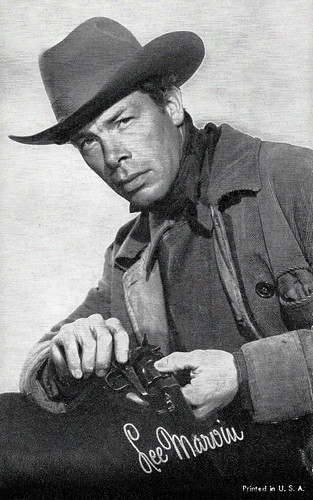
American Arcade card.
Gloria Grahame's vicious boyfriend
Lee Marvin's film debut was in You're in the Navy Now (Henry Hathaway, 1951), which also marked the debuts of Charles Bronson and Jack Warden. This required some filming in Hollywood. Marvin decided to stay there. He had a similar small part in Teresa (Fred Zinnemann, 1951). As a decorated combat veteran, Marvin was a natural in war dramas, where he frequently assisted the director and other actors in realistically portraying infantry movement, arranging costumes, and the use of firearms.
He guest-starred on episodes of Fireside Theatre (1950), Suspense (1950), and Rebound (1952). Hathaway used him again on Diplomatic Courier (Henry Hathaway, 1952) and he could be seen in Down Among the Sheltering Palms (Edmund Goulding, 1952), We're Not Married! (Edmund Goulding, 1952), The Duel at Silver Creek (Don Siegel, 1952), and Hangman's Knot (Roy Huggins, 1952).
He guest-starred on Biff Baker, U.S.A. (1952) and Dragnet (1952-1953), and had a decent role in a feature with Eight Iron Men (Edward Dmytryk, 1952), a war film starring Bonar Colleano and produced by Stanley Kramer. Marvin's role had been played on Broadway by Burt Lancaster . He was a sergeant in the Western Seminole (Budd Boetticher, 1953), and was a corporal in The Glory Brigade (Robert D. Webb, 1953), a Korean War film starring Victor Mature.
He was now in much demand for Westerns: The Stranger Wore a Gun (Andre DeToth, 1953) with Randolph Scott and Gun Fury (Raoul Walsh, 1953) with Rock Hudson and Donna Reed . Marvin received much acclaim for his portrayal as villains in two Film Noirs: The Big Heat (Fritz Lang, 1953) where he played Gloria Grahame 's vicious boyfriend, and The Wild One (László Benedek, 1953) opposite Marlon Brando . Marvin's gang in the film was called "The Beetles".
He continued in TV shows such as The Plymouth Playhouse (1953) and The Pepsi-Cola Playhouse (1954). He had support roles in the 3D horror mystery B-movie Gorilla at Large (Harmon Jones, 1954) and had a notable small role as smart-aleck sailor Meatball in The Caine Mutiny (Edward Dmytryk, 1954), produced by Stanley Kramer. Marvin was in the war film The Raid (Hugo Fregonese, 1954) with Van Heflin and Anne Bancroft, and in episodes of the TV series Center Stage (1954), Medic (1954), and TV Reader's Digest (1955).
He had an excellent part as Hector, the small-town hood in Bad Day at Black Rock (John Sturges, 1955) with Spencer Tracy and Robert Ryan. Also in 1955, he played a conflicted, brutal bank-robber in the thriller Violent Saturday (Richard Fleischer, 1955) with Victor Mature. A latter-day critic wrote of the character, "Marvin brings a multi-faceted complexity to the role and gives a great example of the early promise that launched his long and successful career."
Marvin played Robert Mitchum 's friend in Not as a Stranger (Stanley Kramer, 1955), a medical drama also produced by Kramer. He had bigger supporting roles in A Life in the Balance (Harry Horner, Rafael Portillo, 1955), Pete Kelly's Blues (Jack Webb, 1955) and I Died a Thousand Times (Stuart Heisler, 1955) with Jack Palance . Marvin was the villain in 7 Men from Now (Budd Boetticher, 1956) with Randolph Scott, and was second-billed to Jack Palance in Attack (Robert Aldrich, 1956). Marvin had good roles in The Rack (Arnold Laven, 1956) with Paul Newman, Raintree County (Edward Dmytryk, 1956) starring Montgomery Clift and Elizabeth Taylor , and The Missouri Traveler (Jerry Hopper, 1958).
Marvin finally got to be a leading man in 100 episodes in the successful television series M Squad (1957-1960). Set in Chicago, Illinois, it starred Marvin as Detective Lieutenant Frank Ballinger, a member of "M Squad", a special unit of the Chicago Police, assisting other units in battling organized crime, corruption, and violent crimes citywide. One critic described the show as "a hyped-up, violent Dragnet ... with a hard-as-nails Marvin" playing a tough police lieutenant. Marvin received the role after guest-starring in a memorable Dragnet episode as a serial killer. When the series ended Marvin appeared on such TV shows as Wagon Train (1960-1961), Route 66 (1961), Bonanza (1962), The Untouchables (1961-1962), The Virginian (1962), and The Twilight Zone (1961-1963).
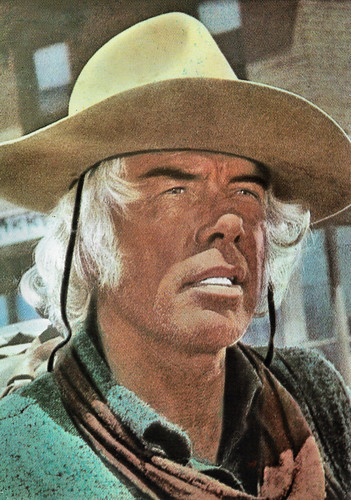
Romanian postcard by Casa Filmului Acin, no 289. Photo: Lee Marvin in Monte Walsh (William A. Fraker, 1970).
A hard-nosed criminal bent on revenge
Lee Marvin returned to features with a prominent role in The Comancheros (Michael Curtiz, 1961) starring John Wayne . He played in two more films with Wayne, both directed by John Ford: The Man Who Shot Liberty Valance (1962), and Donovan's Reef (1963). As the vicious Liberty Valance, Marvin played his first title role and held his own with two of the screen's biggest stars ( John Wayne and James Stewart ). In 1962 Marvin appeared as Martin Kalig on the TV western The Virginian in the episode titled 'It Tolls for Thee'. He continued to guest star on shows like Combat! (1963), Dr. Kildare (1962-1964), and The Great Adventure (1963).
For director Don Siegel, Marvin appeared in The Killers (1964) playing an efficient professional assassin alongside Clu Gulager. The Killers was also the first film in which Marvin received top billing. Marvin finally became a star for his comic role in the Western comedy Cat Ballou (Elliot Silverstein, 1965) starring Jane Fonda . This was a surprise hit and Marvin won the 1965 Oscar for Best Actor and several other awards.
Playing alongside Vivien Leigh and Simone Signoret , Marvin won the 1966 National Board of Review Award for male actors for his role in Ship of Fools (Stanley Kramer, 1965). Marvin next performed in the hit Western The Professionals (Richard Brooks, 1966), in which he played the leader of a small band of skilled mercenaries ( Burt Lancaster , Robert Ryan, and Woody Strode) rescuing a kidnap victim ( Claudia Cardinale ) shortly after the Mexican Revolution.
He followed that film with the hugely successful World War II epic The Dirty Dozen (Robert Aldrich, 1967) in which top-billed Marvin again portrayed an intrepid commander of a colorful group (future stars John Cassavetes, Charles Bronson , Telly Savalas, Jim Brown, and Donald Sutherland) performing an almost impossible mission.
In the wake of these two films and after having received an Oscar, Marvin was a huge star, given enormous control over his next film Point Blank (John Boorman, 1967), co-starring Angie Dickinson . He portrayed a hard-nosed criminal bent on revenge. Marvin, who had selected Boorman himself for the director's slot, had a central role in the film's development, plotline, and staging. Marvin also appeared in another Boorman film, the critically acclaimed but commercially unsuccessful World War II character study Hell in the Pacific (John Boorman, 1968), also starring famed Japanese actor Toshiro Mifune.
Marvin was originally cast as Pike Bishop (later played by William Holden) in The Wild Bunch (1969), but fell out with director Sam Peckinpah and pulled out to star in the Western musical Paint Your Wagon (Joshua Logan, 1969), in which he was top-billed over a singing Clint Eastwood . Despite his limited singing ability, he had a surprise hit song with "Wand'rin' Star". By this time, he was getting paid a million dollars per film, $200,000 less than top star Paul Newman was making at the time.
Marvin had a much greater variety of roles in the 1970s, with fewer bad-guy roles than in earlier years. His 1970s films included Monte Walsh (William A. Fraker, 1970), a Western with Jack Palance and Jeanne Moreau ; the violent Prime Cut (Michael Ritchie, 1972) with Gene Hackman; Pocket Money (Stuart Rosenberg, 1972) with Paul Newman; Emperor of the North (Robert Aldrich, 1973) opposite Ernest Borgnine; as Hickey in The Iceman Cometh (John Frankenheimer, 1973) with Fredric March and Robert Ryan; The Klansman (Terence Young, 1974) with Richard Burton; and Avalanche Express (Mark Robson, 1978), a Cold War thriller with Robert Shaw who died during production. None of these films were big box office hits.
Marvin was offered the role of Quint in Jaws (Steven Spielberg, 1975) but declined, stating "What would I tell my fishing friends who'd see me come off a hero against a dummy shark?". Marvin's last big role was in Samuel Fuller's The Big Red One (1980), a war film based on Fuller's own war experiences. His remaining films were Death Hunt (Peter R. Hunt, 1981), a Canadian action film with Charles Bronson ; Gorky Park (Michael Apted, 1983) with William Hurt; and in France Canicule/Dog Day (Yves Boisset, 1984), with Miou-Miou .
For TV he did The Dirty Dozen: Next Mission (Andrew V. McLaglen, 1985), a sequel with Marvin, Ernest Borgnine, and Richard Jaeckel picking up where they had left off despite being 18 years older. His final appearance was in The Delta Force (Menahem Golan, 1986) with Chuck Norris, playing a role turned down by Charles Bronson .
Marvin had married Betty Ebeling in February 1951 and together they had four children, son Christopher Lamont (1952–2013), and three daughters: Courtenay Lee (1954), Cynthia Louise (1956), and Claudia Leslie (1958–2012). Married 16 years, they divorced in 1967. A long-term romantic relationship with Michelle Triola led, after their breakup, to a highly publicised lawsuit in which Triola asked for a substantial portion of Marvin's assets. Her case failed in its main pursuit but did establish a legal precedent for the rights of unmarried cohabitors, the so-called "palimony" law.
Marvin reunited with his high school sweetheart, Pamela Feeley and they married in October 1970. She had four children with three previous marriages, they had no children together and remained married until his death in 1987. In December 1986, Marvin was hospitalised for more than two weeks because of a condition related to coccidioidomycosis (or valley fever, an infection caused by the fungus Coccidioides). Marvin died of a heart attack on 29 August 1987 in Tucson, Arizona, aged 63. He was buried with full military honours at Arlington National Cemetery.
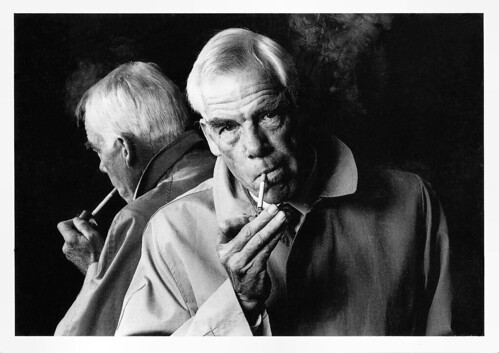
British postcard by Photo-Roff in the Black & White Gallery, London, no. 1180. Photo: David Steen, 1980.
Sources: (IMDb), Wikipedia, and .

American Mirro-Krome postcard by H.S. Crocker Co. Inc., San Francisco, Calif., no. HSC-305. Lee Marvin in the TV series M Squad (1957). Caption: Lee Marvin plays the role of Lieutenant Ballinger in M Squad, an action-detective series filmed at Revue Studios. In addition to starring in his M Squad series, Lee also appears as a guest star in television specials.
He caught the acting bug
Lamont Waltman Marvin Jr. was born in 1924 in New York City. He was the son of Lamont Waltman Marvin, an advertising executive and later the head of the New York and New England Apple Institute, and Courtenay Washington (née Davidge), a fashion and beauty writer/editor. As with his elder brother, Robert, he was named in honour of Confederate General Robert E. Lee, who was his first cousin, four times removed. His father was a direct descendant of Matthew Marvin Sr., who emigrated from Great Bentley, Essex, England, in 1635, and helped found Hartford, Connecticut.
Marvin studied the violin when he was young. As a teenager, Marvin "spent weekends and spare time hunting deer, puma, wild turkey, and bobwhite in the wilds of the then-uncharted Everglades". He attended Manumit School, a Christian socialist boarding school in Pawling, New York, during the late 1930s, and later attended St. Leo College Preparatory School, a Catholic school in St. Leo, Florida, after being expelled from several other schools for bad behaviour.
Marvin left school at 18 to enlist in the United States Marine Corps Reserve in 1942. He served with the 4th Marine Division in the Pacific Theater during World War II. While serving as a member of "I" Company, 3rd Battalion, 24th Marines, 4th Marine Division, he was wounded in action on in 1944, during the assault on Mount Tapochau in the Battle of Saipan, during which most of his company were casualties. He was hit by machine-gun fire, which severed his sciatic nerve, and then was hit again in the foot by a sniper.
After over a year of medical treatment in naval hospitals, Marvin was given a medical discharge with the rank of a private first class (he had been a corporal years earlier but had been demoted after causing trouble) in 1945 Philadelphia. Marvin's military awards include the Purple Heart Medal, the Presidential Unit Citation, the American Campaign Medal, the Asiatic-Pacific Campaign Medal, the World War II Victory Medal, and the Combat Action Ribbon.
After the war, while working as a plumber's assistant at a local community theatre in upstate New York, Lee Marvin was asked to replace an actor who had fallen ill during rehearsals. He caught the acting bug and got a job with the company at $7 a week. He moved to Greenwich Village and used the GI Bill to study at the American Theatre Wing.
He appeared on stage in a production of 'Uniform of Flesh', an adaptation of the novel 'Billy Budd' (1949). It was done at the Experimental Theatre, where a few months later Marvin also appeared in 'The Nineteenth Hole of Europe' (1949). Marvin began appearing on television shows like Escape, The Big Story, and Treasury Men in Action. He made it to Broadway with a small role in another production of 'Uniform of Flesh', now called 'Billy Budd' in February 1951.

American Arcade card.
Gloria Grahame's vicious boyfriend
Lee Marvin's film debut was in You're in the Navy Now (Henry Hathaway, 1951), which also marked the debuts of Charles Bronson and Jack Warden. This required some filming in Hollywood. Marvin decided to stay there. He had a similar small part in Teresa (Fred Zinnemann, 1951). As a decorated combat veteran, Marvin was a natural in war dramas, where he frequently assisted the director and other actors in realistically portraying infantry movement, arranging costumes, and the use of firearms.
He guest-starred on episodes of Fireside Theatre (1950), Suspense (1950), and Rebound (1952). Hathaway used him again on Diplomatic Courier (Henry Hathaway, 1952) and he could be seen in Down Among the Sheltering Palms (Edmund Goulding, 1952), We're Not Married! (Edmund Goulding, 1952), The Duel at Silver Creek (Don Siegel, 1952), and Hangman's Knot (Roy Huggins, 1952).
He guest-starred on Biff Baker, U.S.A. (1952) and Dragnet (1952-1953), and had a decent role in a feature with Eight Iron Men (Edward Dmytryk, 1952), a war film starring Bonar Colleano and produced by Stanley Kramer. Marvin's role had been played on Broadway by Burt Lancaster . He was a sergeant in the Western Seminole (Budd Boetticher, 1953), and was a corporal in The Glory Brigade (Robert D. Webb, 1953), a Korean War film starring Victor Mature.
He was now in much demand for Westerns: The Stranger Wore a Gun (Andre DeToth, 1953) with Randolph Scott and Gun Fury (Raoul Walsh, 1953) with Rock Hudson and Donna Reed . Marvin received much acclaim for his portrayal as villains in two Film Noirs: The Big Heat (Fritz Lang, 1953) where he played Gloria Grahame 's vicious boyfriend, and The Wild One (László Benedek, 1953) opposite Marlon Brando . Marvin's gang in the film was called "The Beetles".
He continued in TV shows such as The Plymouth Playhouse (1953) and The Pepsi-Cola Playhouse (1954). He had support roles in the 3D horror mystery B-movie Gorilla at Large (Harmon Jones, 1954) and had a notable small role as smart-aleck sailor Meatball in The Caine Mutiny (Edward Dmytryk, 1954), produced by Stanley Kramer. Marvin was in the war film The Raid (Hugo Fregonese, 1954) with Van Heflin and Anne Bancroft, and in episodes of the TV series Center Stage (1954), Medic (1954), and TV Reader's Digest (1955).
He had an excellent part as Hector, the small-town hood in Bad Day at Black Rock (John Sturges, 1955) with Spencer Tracy and Robert Ryan. Also in 1955, he played a conflicted, brutal bank-robber in the thriller Violent Saturday (Richard Fleischer, 1955) with Victor Mature. A latter-day critic wrote of the character, "Marvin brings a multi-faceted complexity to the role and gives a great example of the early promise that launched his long and successful career."
Marvin played Robert Mitchum 's friend in Not as a Stranger (Stanley Kramer, 1955), a medical drama also produced by Kramer. He had bigger supporting roles in A Life in the Balance (Harry Horner, Rafael Portillo, 1955), Pete Kelly's Blues (Jack Webb, 1955) and I Died a Thousand Times (Stuart Heisler, 1955) with Jack Palance . Marvin was the villain in 7 Men from Now (Budd Boetticher, 1956) with Randolph Scott, and was second-billed to Jack Palance in Attack (Robert Aldrich, 1956). Marvin had good roles in The Rack (Arnold Laven, 1956) with Paul Newman, Raintree County (Edward Dmytryk, 1956) starring Montgomery Clift and Elizabeth Taylor , and The Missouri Traveler (Jerry Hopper, 1958).
Marvin finally got to be a leading man in 100 episodes in the successful television series M Squad (1957-1960). Set in Chicago, Illinois, it starred Marvin as Detective Lieutenant Frank Ballinger, a member of "M Squad", a special unit of the Chicago Police, assisting other units in battling organized crime, corruption, and violent crimes citywide. One critic described the show as "a hyped-up, violent Dragnet ... with a hard-as-nails Marvin" playing a tough police lieutenant. Marvin received the role after guest-starring in a memorable Dragnet episode as a serial killer. When the series ended Marvin appeared on such TV shows as Wagon Train (1960-1961), Route 66 (1961), Bonanza (1962), The Untouchables (1961-1962), The Virginian (1962), and The Twilight Zone (1961-1963).

Romanian postcard by Casa Filmului Acin, no 289. Photo: Lee Marvin in Monte Walsh (William A. Fraker, 1970).
A hard-nosed criminal bent on revenge
Lee Marvin returned to features with a prominent role in The Comancheros (Michael Curtiz, 1961) starring John Wayne . He played in two more films with Wayne, both directed by John Ford: The Man Who Shot Liberty Valance (1962), and Donovan's Reef (1963). As the vicious Liberty Valance, Marvin played his first title role and held his own with two of the screen's biggest stars ( John Wayne and James Stewart ). In 1962 Marvin appeared as Martin Kalig on the TV western The Virginian in the episode titled 'It Tolls for Thee'. He continued to guest star on shows like Combat! (1963), Dr. Kildare (1962-1964), and The Great Adventure (1963).
For director Don Siegel, Marvin appeared in The Killers (1964) playing an efficient professional assassin alongside Clu Gulager. The Killers was also the first film in which Marvin received top billing. Marvin finally became a star for his comic role in the Western comedy Cat Ballou (Elliot Silverstein, 1965) starring Jane Fonda . This was a surprise hit and Marvin won the 1965 Oscar for Best Actor and several other awards.
Playing alongside Vivien Leigh and Simone Signoret , Marvin won the 1966 National Board of Review Award for male actors for his role in Ship of Fools (Stanley Kramer, 1965). Marvin next performed in the hit Western The Professionals (Richard Brooks, 1966), in which he played the leader of a small band of skilled mercenaries ( Burt Lancaster , Robert Ryan, and Woody Strode) rescuing a kidnap victim ( Claudia Cardinale ) shortly after the Mexican Revolution.
He followed that film with the hugely successful World War II epic The Dirty Dozen (Robert Aldrich, 1967) in which top-billed Marvin again portrayed an intrepid commander of a colorful group (future stars John Cassavetes, Charles Bronson , Telly Savalas, Jim Brown, and Donald Sutherland) performing an almost impossible mission.
In the wake of these two films and after having received an Oscar, Marvin was a huge star, given enormous control over his next film Point Blank (John Boorman, 1967), co-starring Angie Dickinson . He portrayed a hard-nosed criminal bent on revenge. Marvin, who had selected Boorman himself for the director's slot, had a central role in the film's development, plotline, and staging. Marvin also appeared in another Boorman film, the critically acclaimed but commercially unsuccessful World War II character study Hell in the Pacific (John Boorman, 1968), also starring famed Japanese actor Toshiro Mifune.
Marvin was originally cast as Pike Bishop (later played by William Holden) in The Wild Bunch (1969), but fell out with director Sam Peckinpah and pulled out to star in the Western musical Paint Your Wagon (Joshua Logan, 1969), in which he was top-billed over a singing Clint Eastwood . Despite his limited singing ability, he had a surprise hit song with "Wand'rin' Star". By this time, he was getting paid a million dollars per film, $200,000 less than top star Paul Newman was making at the time.
Marvin had a much greater variety of roles in the 1970s, with fewer bad-guy roles than in earlier years. His 1970s films included Monte Walsh (William A. Fraker, 1970), a Western with Jack Palance and Jeanne Moreau ; the violent Prime Cut (Michael Ritchie, 1972) with Gene Hackman; Pocket Money (Stuart Rosenberg, 1972) with Paul Newman; Emperor of the North (Robert Aldrich, 1973) opposite Ernest Borgnine; as Hickey in The Iceman Cometh (John Frankenheimer, 1973) with Fredric March and Robert Ryan; The Klansman (Terence Young, 1974) with Richard Burton; and Avalanche Express (Mark Robson, 1978), a Cold War thriller with Robert Shaw who died during production. None of these films were big box office hits.
Marvin was offered the role of Quint in Jaws (Steven Spielberg, 1975) but declined, stating "What would I tell my fishing friends who'd see me come off a hero against a dummy shark?". Marvin's last big role was in Samuel Fuller's The Big Red One (1980), a war film based on Fuller's own war experiences. His remaining films were Death Hunt (Peter R. Hunt, 1981), a Canadian action film with Charles Bronson ; Gorky Park (Michael Apted, 1983) with William Hurt; and in France Canicule/Dog Day (Yves Boisset, 1984), with Miou-Miou .
For TV he did The Dirty Dozen: Next Mission (Andrew V. McLaglen, 1985), a sequel with Marvin, Ernest Borgnine, and Richard Jaeckel picking up where they had left off despite being 18 years older. His final appearance was in The Delta Force (Menahem Golan, 1986) with Chuck Norris, playing a role turned down by Charles Bronson .
Marvin had married Betty Ebeling in February 1951 and together they had four children, son Christopher Lamont (1952–2013), and three daughters: Courtenay Lee (1954), Cynthia Louise (1956), and Claudia Leslie (1958–2012). Married 16 years, they divorced in 1967. A long-term romantic relationship with Michelle Triola led, after their breakup, to a highly publicised lawsuit in which Triola asked for a substantial portion of Marvin's assets. Her case failed in its main pursuit but did establish a legal precedent for the rights of unmarried cohabitors, the so-called "palimony" law.
Marvin reunited with his high school sweetheart, Pamela Feeley and they married in October 1970. She had four children with three previous marriages, they had no children together and remained married until his death in 1987. In December 1986, Marvin was hospitalised for more than two weeks because of a condition related to coccidioidomycosis (or valley fever, an infection caused by the fungus Coccidioides). Marvin died of a heart attack on 29 August 1987 in Tucson, Arizona, aged 63. He was buried with full military honours at Arlington National Cemetery.

British postcard by Photo-Roff in the Black & White Gallery, London, no. 1180. Photo: David Steen, 1980.
Sources: (IMDb), Wikipedia, and .
Published on July 03, 2021 22:00
July 2, 2021
Humour à la Carte
During the 1980s, one of the most prominent postcard publishers was Editions Humour à la Carte. The French publisher was based at 38, Rue Ste Croix de la Bretonnier in Paris, according to the flip side of the cards. When you visited Centre Pompidou you could find many postcard shops in the Beaubourg area that sold the Humour à la Carte cards with such film stars as young Arnold Schwarzenegger as Conan, Meryl Streep and Matt Dillon, and pop stars like David Bowie, Billy Idol and Madonna. But the Humour à la Carte cards also offer an overview of the then flourishing French cinema: Isabelle Adjani, Isabelle Huppert, Christophe Lambert, but also the new generation with Juliette Binoche and Emmanuelle Béart, and of course the two protagonists of that sensual sensation 37°2 le matin/Betty Blue (1986), Béatrice Dalle and Jean-Hugues Anglade. Editions Humour à la Carte was founded in 1984 and closed its doors in 1989.

French postcard by Editions Humour à la Carte, Paris, no. ST-56. Madonna .
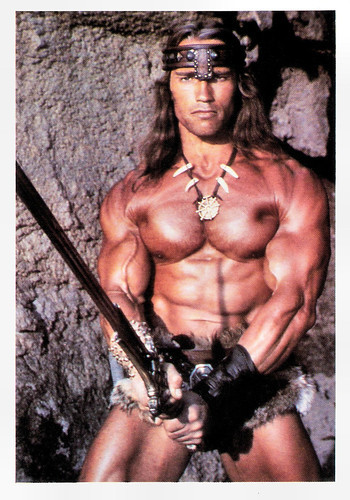
French postcard by Humour à la Carte, Paris, no. ST-59. Photo: Arnold Schwarzenegger in Conan the Barbarian (John Milius, 1982).
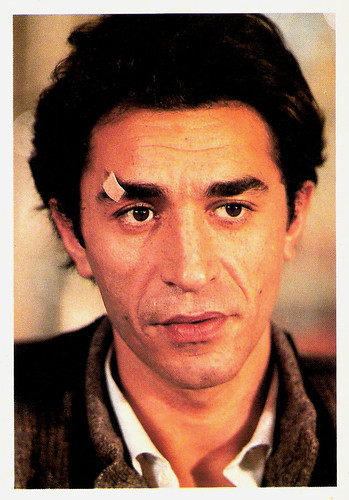
French postcard by Editions Humour à la Carte, Paris, no. ST-62. Richard Berry .
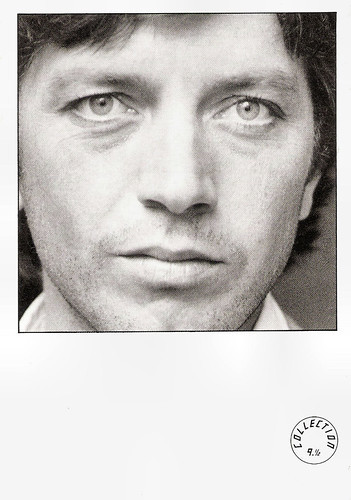
French postcard in the 'Collection 9.1/2' series by Editions Humour à la Carte, Paris, no. ST-63. Sent by mail in 2000. Bernard Giraudeau .
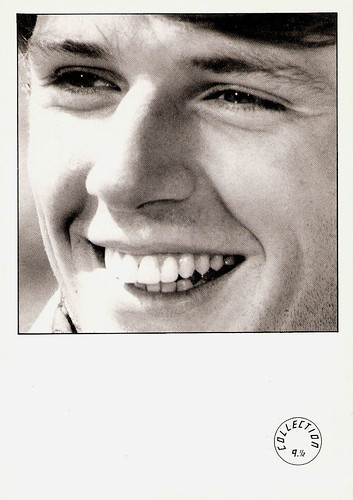
French postcard in the 'Collection 9.1/2' series by Editions Humour à la carte, Paris, no. ST-69. Lambert Wilson .
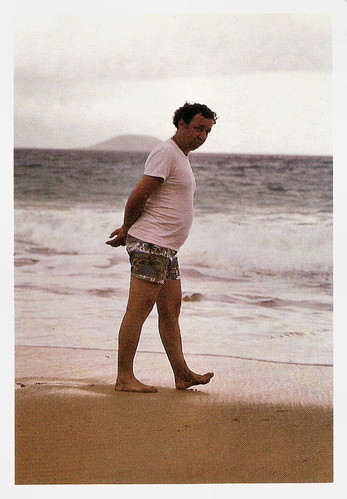
French postcard by Editions Humour à la Carte, Paris, no. ST-101. Photo: Alain Bizos / VU. Coluche .
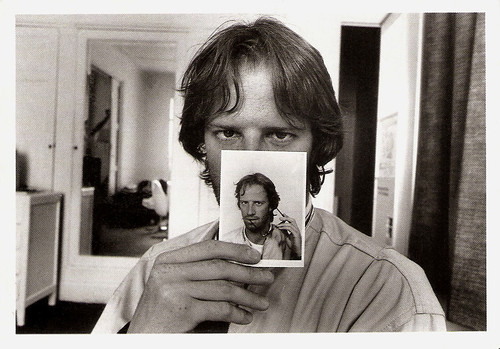
French postcard by Editions Humour à la Carte, Paris, no. ST-105. Photo: Pascal Dolemieux / VU. Christophe or Christopher Lambert .
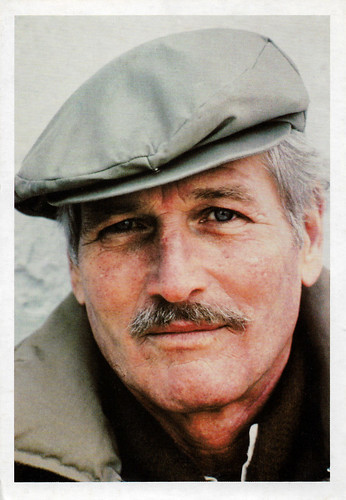
French postcard by Editions Humour à la Carte, Paris, no. ST-118. Paul Newman.
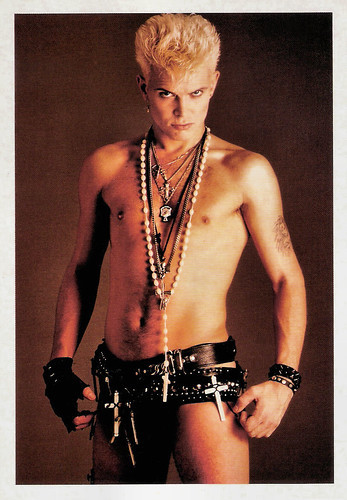
French postcard by Editions Humour à la Carte, Paris, no. ST-120. Billy Idol.
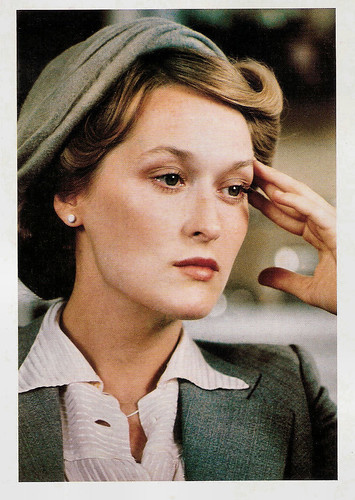
French postcard by Editions Humour à la Carte, Paris, no. ST-121. Meryl Streep in Plenty (Fred Schepisi, 1985).
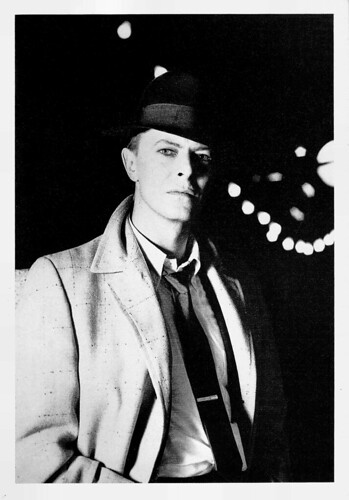
French postcard by Editions Humour à la Carte, Paris, no. ST-127. Photo: David Bowie in Absolute Beginners (Julien Temple, 1986).
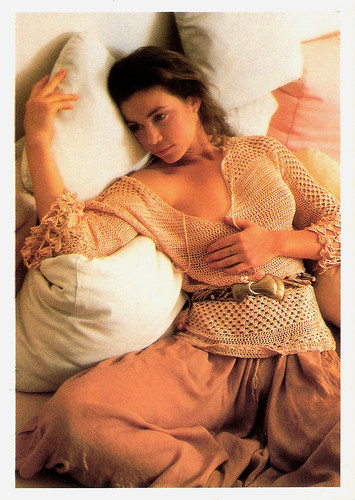
French postcard by Humour à la Carte, Paris, no. ST-154. Valérie Kaprisky .
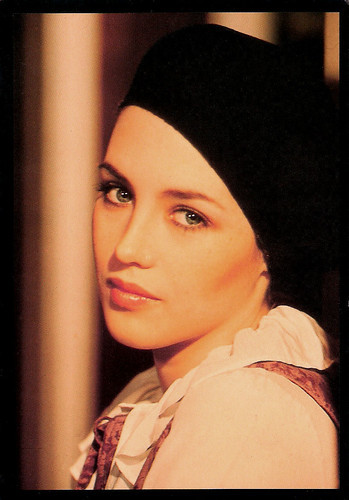
French postcard by Humour a la Carte, Paris, no. ST-158. Isabelle Adjani .
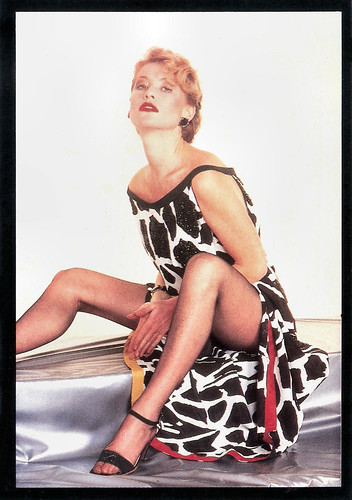
French postcard by Humour a la Carte, Paris, no. ST-159. Isabelle Huppert .
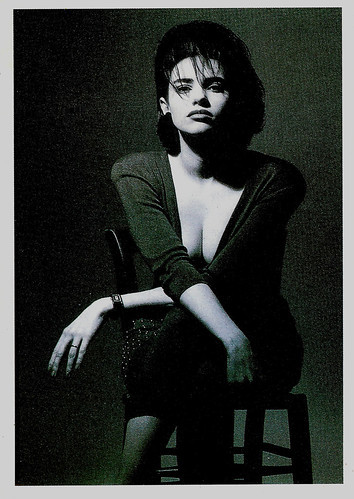
French postcard by Humour à la Carte, Paris, no. ST-160. Photo: J. Casano / Stills. Béatrice Dalle .
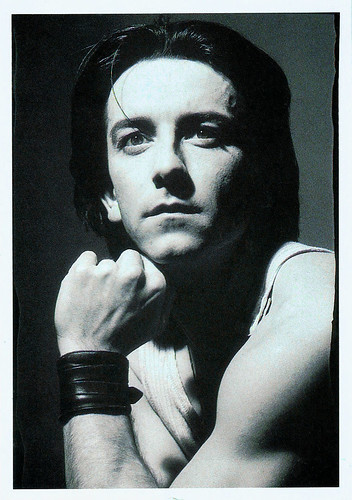
French postcard by Humour a la Carte, Paris, no. ST-164. Photo: J. Casano / Stills. Jean-Hugues Anglade .
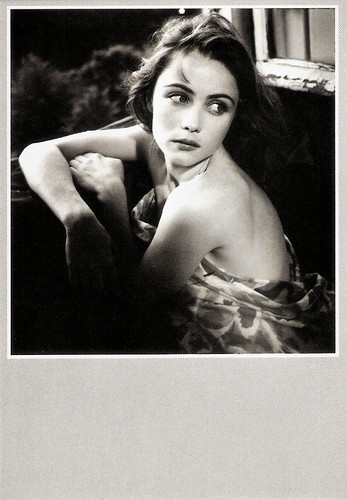
French postcard in the 'Le jour se lève' series by Editions Humour à la Carte, Paris, no. ST-168. Photo: Jean-Pierre Larcher. Emmanuelle Béart .
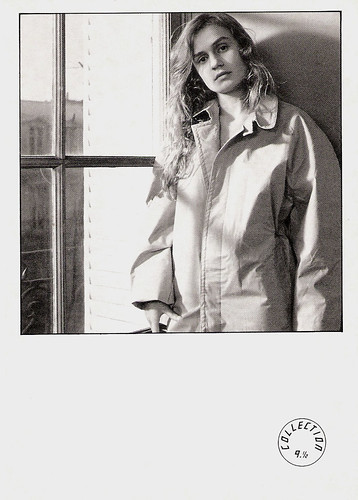
French postcard in the 'Le jour se lève' series by Editions Humour à la Carte, Paris, no. ST-169. Photo: Jean-Pierre Larcher. Sandrine Bonnaire .
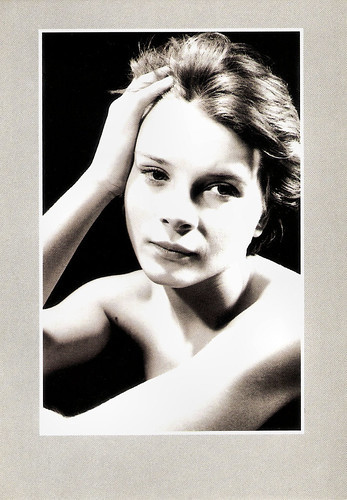
French postcard in the 'Le jour se lève' series by Editions Humour à la Carte, Paris, no. ST-170. Photo: Jean-Pierre Larcher. Juliette Binoche .
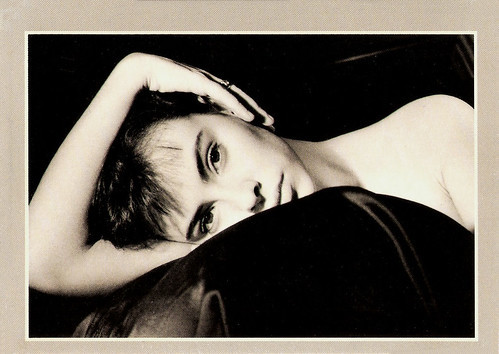
French postcard in the 'Le jour se lève' series by Editions Humour à la Carte, Paris, no. ST-177. Photo: Jean-Pierre Larcher. Mathilda May .
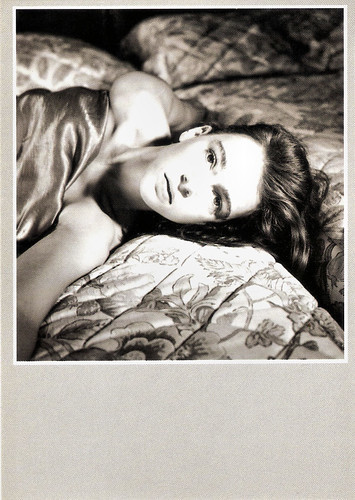
French postcard in the 'Le jour se lève' series by Editions Humour à la carte, Paris, no. ST-179. Photo: Jean-Pierre Larcher. Maruschka Detmers .
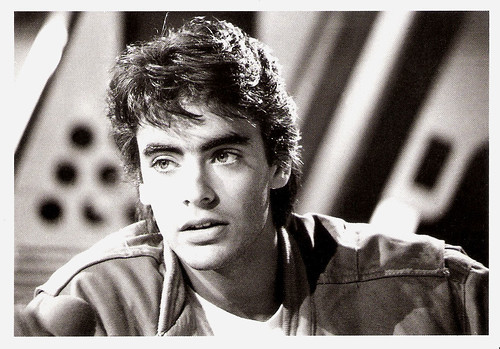
French postcard by Editions Humour à la Carte, Paris, no. ST-184. Anthony Delon .
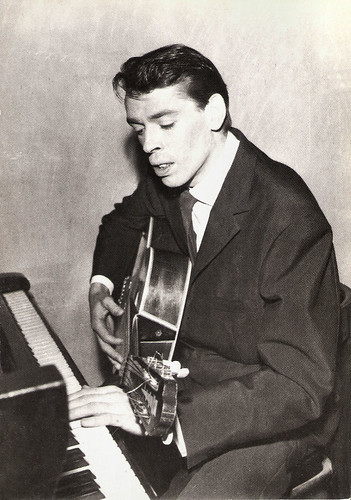
French postcard by Humour à la Carte, Paris, no. 3393. Photo: J.L. Rancurel. Jacques Brel .
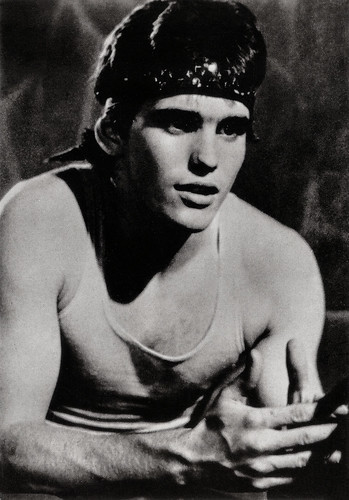
French postcard by Humour à la Carte, Paris, no. 3515. Photo: D.R. Matt Dillon in Rumble Fish (Francis Coppola, 1983).
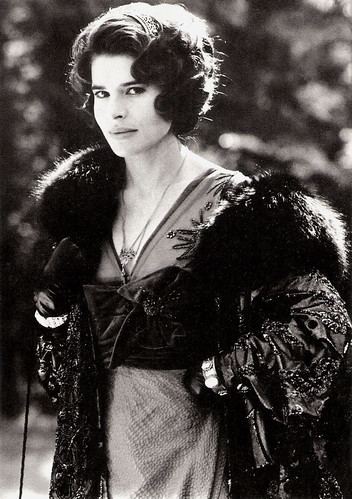
French postcard by Humour a la Carte, Paris, no. 3713. Fanny Ardant .
Source: Societe (French). For more postcards, please check our Humour à la Carte album at Flickr.

French postcard by Editions Humour à la Carte, Paris, no. ST-56. Madonna .

French postcard by Humour à la Carte, Paris, no. ST-59. Photo: Arnold Schwarzenegger in Conan the Barbarian (John Milius, 1982).

French postcard by Editions Humour à la Carte, Paris, no. ST-62. Richard Berry .

French postcard in the 'Collection 9.1/2' series by Editions Humour à la Carte, Paris, no. ST-63. Sent by mail in 2000. Bernard Giraudeau .

French postcard in the 'Collection 9.1/2' series by Editions Humour à la carte, Paris, no. ST-69. Lambert Wilson .

French postcard by Editions Humour à la Carte, Paris, no. ST-101. Photo: Alain Bizos / VU. Coluche .

French postcard by Editions Humour à la Carte, Paris, no. ST-105. Photo: Pascal Dolemieux / VU. Christophe or Christopher Lambert .

French postcard by Editions Humour à la Carte, Paris, no. ST-118. Paul Newman.

French postcard by Editions Humour à la Carte, Paris, no. ST-120. Billy Idol.

French postcard by Editions Humour à la Carte, Paris, no. ST-121. Meryl Streep in Plenty (Fred Schepisi, 1985).

French postcard by Editions Humour à la Carte, Paris, no. ST-127. Photo: David Bowie in Absolute Beginners (Julien Temple, 1986).

French postcard by Humour à la Carte, Paris, no. ST-154. Valérie Kaprisky .

French postcard by Humour a la Carte, Paris, no. ST-158. Isabelle Adjani .

French postcard by Humour a la Carte, Paris, no. ST-159. Isabelle Huppert .

French postcard by Humour à la Carte, Paris, no. ST-160. Photo: J. Casano / Stills. Béatrice Dalle .

French postcard by Humour a la Carte, Paris, no. ST-164. Photo: J. Casano / Stills. Jean-Hugues Anglade .

French postcard in the 'Le jour se lève' series by Editions Humour à la Carte, Paris, no. ST-168. Photo: Jean-Pierre Larcher. Emmanuelle Béart .

French postcard in the 'Le jour se lève' series by Editions Humour à la Carte, Paris, no. ST-169. Photo: Jean-Pierre Larcher. Sandrine Bonnaire .

French postcard in the 'Le jour se lève' series by Editions Humour à la Carte, Paris, no. ST-170. Photo: Jean-Pierre Larcher. Juliette Binoche .

French postcard in the 'Le jour se lève' series by Editions Humour à la Carte, Paris, no. ST-177. Photo: Jean-Pierre Larcher. Mathilda May .

French postcard in the 'Le jour se lève' series by Editions Humour à la carte, Paris, no. ST-179. Photo: Jean-Pierre Larcher. Maruschka Detmers .

French postcard by Editions Humour à la Carte, Paris, no. ST-184. Anthony Delon .

French postcard by Humour à la Carte, Paris, no. 3393. Photo: J.L. Rancurel. Jacques Brel .

French postcard by Humour à la Carte, Paris, no. 3515. Photo: D.R. Matt Dillon in Rumble Fish (Francis Coppola, 1983).

French postcard by Humour a la Carte, Paris, no. 3713. Fanny Ardant .
Source: Societe (French). For more postcards, please check our Humour à la Carte album at Flickr.
Published on July 02, 2021 22:00
July 1, 2021
Bessie Love
American actress Bessie Love (1898-1986) was introduced to the cinema by D.W. Griffith. He also gave the actress her screen name. She played innocent young girls and later wholesome leading ladies in silent films and early talkies. Her acting career spanned eight decades, and her role in The Broadway Melody (1929) earned her an Oscar nomination for Best Actress.
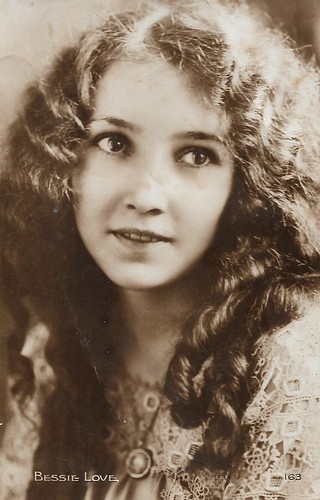
French postcard by Editions Cinémagazine, no. 163.

Vintage postcard by Engret R.C. & A.H., no. 246. Photo: Vitagraph. Collection: Marlene Pilaete.
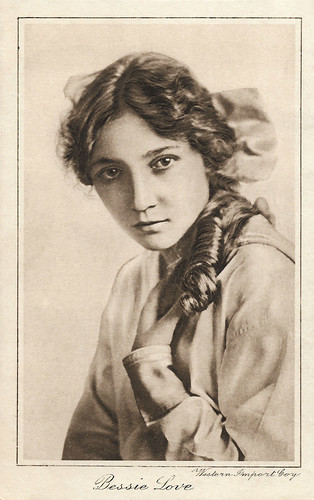
British postcard by Cinema. Photo: Western Import Co.
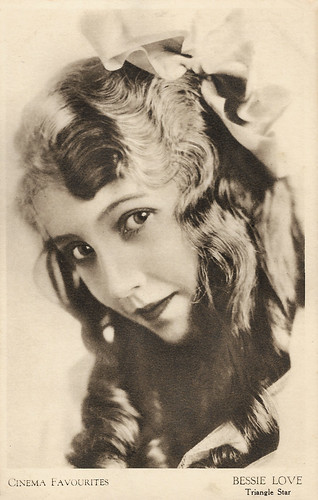
British postcard in the Cinema Favourites series by Photochrom Co., London, Ref. 102. Photo: Triangle.
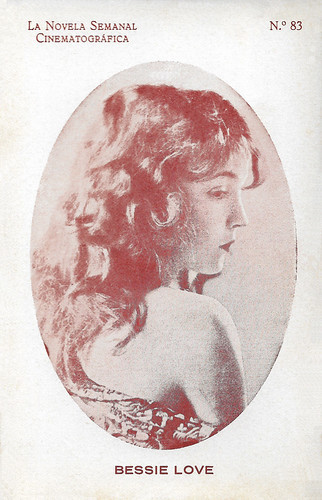
Spanish postcard by La Novela Semanal Cinematografica, no. 83.
The first screen Charleston dance
Bessie Love was born Juanita Horton in 1898 in Midland, Texas. Her cowboy father moved the family to Arizona, New Mexico, and then to Hollywood, where he became a chiropractor.
As the family needed money, Bessie's mother sent her to Biograph Studios, hoping she would become an actress. Pioneering film director D.W. Griffith saw she was pretty and had some acting talent. He put her in several of his films, including a small part in Intolerance: Love's Struggle Throughout the Ages (D.W. Griffith, 1916).
Love dropped out of Los Angeles High School to pursue her film career, although she completed her diploma many years later. Her first important role was in the drama The Flying Torpedo (John B. O'Brien, Christy Cabanne, 1916), starring John Emerson.
Bessie became popular with audiences and worked with Douglas Fairbanks in Reggie Mixes In (Christy Cabanne, 1916) and The Mystery of the Leaping Fish (John Emerson, Christy Cabanne, 1916). William S. Hart was her co-star in The Aryan (Reginald Barker, William S. Hart, Clifford Smith, 1916).
She then moved to Vitagraph and starred in a number of comedy-dramas. She took an active role in the management of her career, upgrading her representation to Gerald C. Duffy, the former editor of Picture-Play Magazine, and publicising herself by playing the ukulele and dancing for members of the military.
In 1922, Love was chosen as a WAMPAS Baby Star. In the 1920s she began to act in more mature roles. In 1923, she starred in Human Wreckage (John Griffith Wray, 1923), with Dorothy Davenport and produced by Thomas Ince. The next year, she starred in Those Who Dance (Lambert Hillyer, 1924), opposite Blanche Sweet . She also began to work on the stage.
She performed the first screen Charleston dance in The King on Main Street (Monta Bell, 1925) starring Adolphe Menjou . Her technique was documented in instructional guides, including a series of photographs by Edward Steichen. She subsequently performed the dance the following year in The Song and Dance Man (Herbert Brenon, 1926).
She also starred in The Lost World (Harry O. Hoyt, 1925), a Science-Fiction adventure based on the novel of the same name by Sir Arthur Conan Doyle. Love gave one of her best performances in Dress Parade (Donald Crisp, 1927) with William Boyd. The following year, she starred in The Matinee Idol (1928), a romantic comedy directed by a young Frank Capra. In 1929, she married agent William B. Hawks. They would have one child, Patricia (1932), and divorced in 1936. It would be her only marriage.
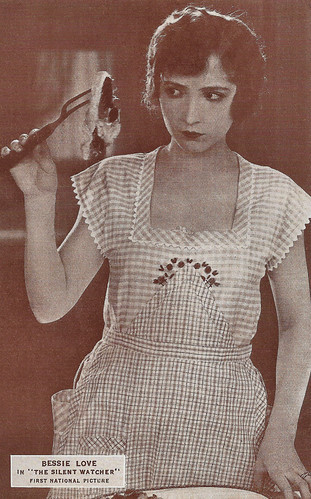
American 'Arcade' postcard. Photo: First National .Bessie Love in The Silent Watcher (Frank Lloyd, 1924).
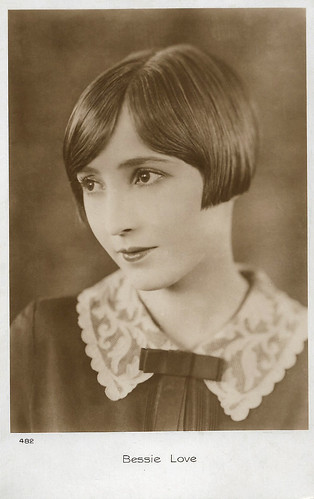
French postcard by Cinémagazine-Edition, Paris, no. 482.
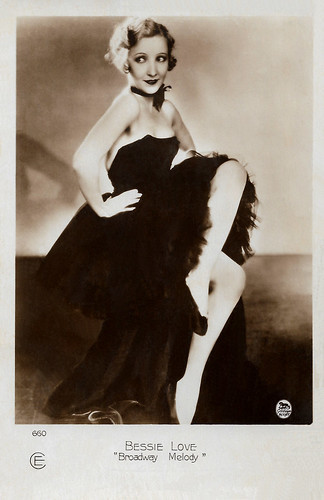
French postcard by Cinémagazine-Edition, Paris, no. 660. Photo: Metro-Goldwyn-Mayer. Bessie Love in The Broadway Melody (Harry Beaumont, 1929).
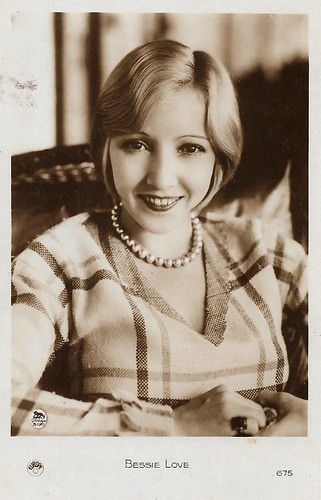
French postcard by Europe, no. 675. Photo: Metro-Goldwyn-Mayer.
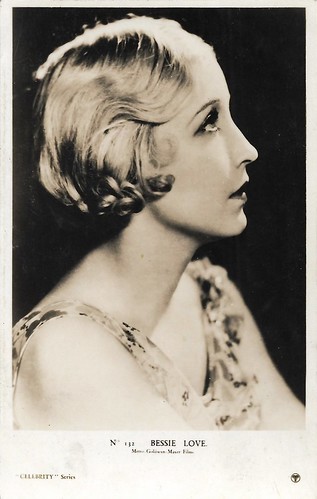
British postcard in the Celebrity Series by The Ram Challenges Company / Associated Photo Printers, London., no. 132. Photo: Metro-Goldwyn-Mayer.
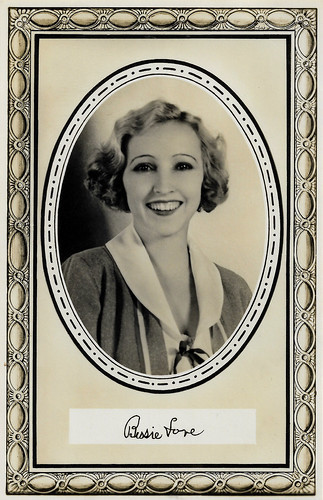
British 'Real Photograph' postcard in the Autograph Series, London, no. A 36.
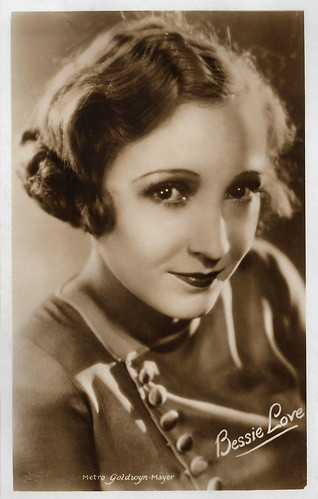
British Real Photograph postcard by Sarony, no. 62. Photo: Metro Goldwyn Mayer. Caption: No. 62 of a second Series of 42 CINEMA STARS issued with Sarony Cigarettes.
A 5-year contract with MGM
Bessie Love toured with a musical revue for sixteen weeks. The experience she gained on the Vaudeville stage singing and dancing in three performances a day prepared her for the introduction of sound films.
When sound came into vogue, Bessie Love made a number of them and received an Academy Award nomination for The Broadway Melody (Harry Beaumont, 1929). The success of the film resulted in a 5-year contract with MGM and an increase in her weekly salary.
By 1931, however, her Hollywood career was over. She moved to England in 1935 and did stage work and occasional films there. Love briefly returned to the United States in 1936 to seek a divorce.
During World War II, she entertained the troops and also worked for the Red Cross. By the 1950s she started playing small roles in films such as No Highway (Henry Koster, 1951), starring James Stewart and Marlene Dietrich , and The Barefoot Contessa (Joseph L. Mankiewicz, 1954) with Humphrey Bogart and Ava Gardner .
In England, Love had a substantial supporting part and received fifth billing in Ealing Studios' Nowhere to Go (Seth Holt, 1958) with George Nader and Maggie Smith in her film debut. She also played small roles in The Greengage Summer (Lewis Gilbert, 1961) starring Kenneth More, the James Bond thriller On Her Majesty's Secret Service (Peter R. Hunt, 1969) with George Lazenby and Diana Rigg , and in John Schlesinger's Sunday Bloody Sunday (1971). She also played the mother of Vanessa Redgrave 's titular character in Isadora (Karel Reisz, 1968).
In the 1980s she appeared in the big-budget Ragtime (Milos Forman, 1981) which starred James Cagney, and later that year in Reds (Warren Beatty, 1981) which starred Warren Beatty and Diane Keaton. Her final film was the erotic horror film The Hunger (Tony Scott, 1983), starring Catherine Deneuve and David Bowie .
Bessie Love passed away in 1986 in London, England, UK.
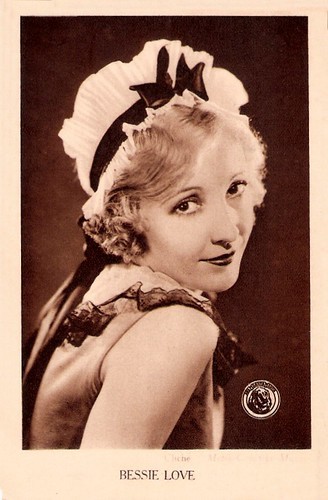
Belgian postcard by S.A. Cacao et Chocolat Kivou, Vilvo[o]rde, Belgium.
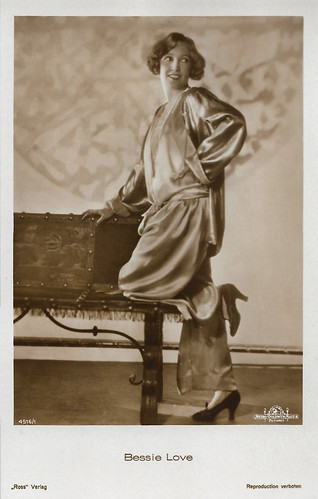
German postcard by Ross Verlag, no. 4516/1, 1929-1930. Photo: Metro-Goldwyn-Mayer.
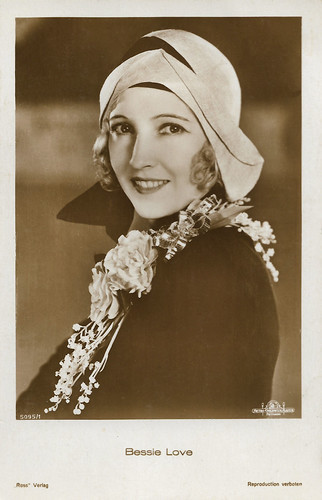
German postcard by Ross Verlag, no. 5095/1, 1930-1931. Photo: Metro Goldwyn Mayer.
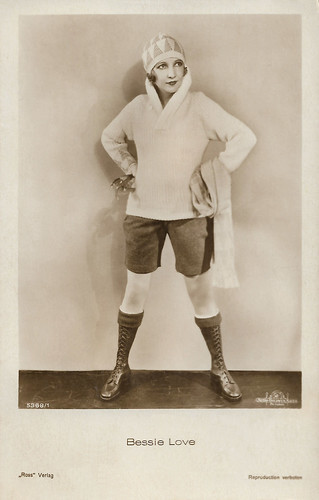
German postcard by Ross Verlag, no. 5368/1, 1930-1931. Photo: Metro Goldwyn Mayer.
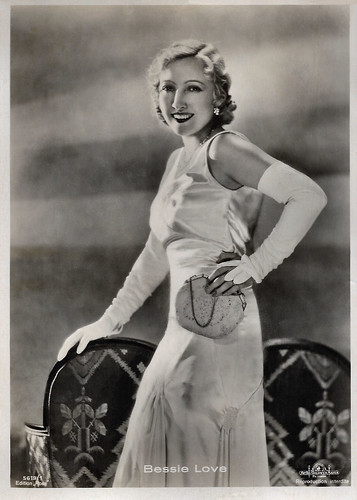
French postcard by Edition Ross, no. 5619/1, 1930-1931. Photo: Metro-Goldwyn-Mayer.
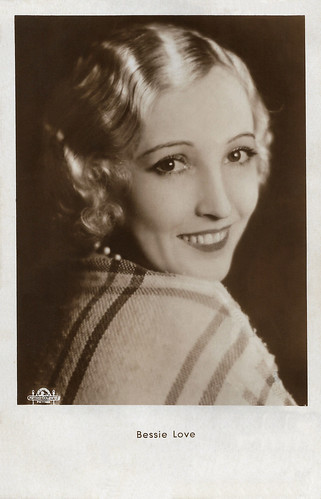
Austrian postcard by Iris Verlag, no. 6046. Photo: Metro Goldwyn Mayer. Sent by mail in 1931.
Sources: (IMDb), Wikipedia, and .

French postcard by Editions Cinémagazine, no. 163.

Vintage postcard by Engret R.C. & A.H., no. 246. Photo: Vitagraph. Collection: Marlene Pilaete.

British postcard by Cinema. Photo: Western Import Co.

British postcard in the Cinema Favourites series by Photochrom Co., London, Ref. 102. Photo: Triangle.

Spanish postcard by La Novela Semanal Cinematografica, no. 83.
The first screen Charleston dance
Bessie Love was born Juanita Horton in 1898 in Midland, Texas. Her cowboy father moved the family to Arizona, New Mexico, and then to Hollywood, where he became a chiropractor.
As the family needed money, Bessie's mother sent her to Biograph Studios, hoping she would become an actress. Pioneering film director D.W. Griffith saw she was pretty and had some acting talent. He put her in several of his films, including a small part in Intolerance: Love's Struggle Throughout the Ages (D.W. Griffith, 1916).
Love dropped out of Los Angeles High School to pursue her film career, although she completed her diploma many years later. Her first important role was in the drama The Flying Torpedo (John B. O'Brien, Christy Cabanne, 1916), starring John Emerson.
Bessie became popular with audiences and worked with Douglas Fairbanks in Reggie Mixes In (Christy Cabanne, 1916) and The Mystery of the Leaping Fish (John Emerson, Christy Cabanne, 1916). William S. Hart was her co-star in The Aryan (Reginald Barker, William S. Hart, Clifford Smith, 1916).
She then moved to Vitagraph and starred in a number of comedy-dramas. She took an active role in the management of her career, upgrading her representation to Gerald C. Duffy, the former editor of Picture-Play Magazine, and publicising herself by playing the ukulele and dancing for members of the military.
In 1922, Love was chosen as a WAMPAS Baby Star. In the 1920s she began to act in more mature roles. In 1923, she starred in Human Wreckage (John Griffith Wray, 1923), with Dorothy Davenport and produced by Thomas Ince. The next year, she starred in Those Who Dance (Lambert Hillyer, 1924), opposite Blanche Sweet . She also began to work on the stage.
She performed the first screen Charleston dance in The King on Main Street (Monta Bell, 1925) starring Adolphe Menjou . Her technique was documented in instructional guides, including a series of photographs by Edward Steichen. She subsequently performed the dance the following year in The Song and Dance Man (Herbert Brenon, 1926).
She also starred in The Lost World (Harry O. Hoyt, 1925), a Science-Fiction adventure based on the novel of the same name by Sir Arthur Conan Doyle. Love gave one of her best performances in Dress Parade (Donald Crisp, 1927) with William Boyd. The following year, she starred in The Matinee Idol (1928), a romantic comedy directed by a young Frank Capra. In 1929, she married agent William B. Hawks. They would have one child, Patricia (1932), and divorced in 1936. It would be her only marriage.

American 'Arcade' postcard. Photo: First National .Bessie Love in The Silent Watcher (Frank Lloyd, 1924).

French postcard by Cinémagazine-Edition, Paris, no. 482.

French postcard by Cinémagazine-Edition, Paris, no. 660. Photo: Metro-Goldwyn-Mayer. Bessie Love in The Broadway Melody (Harry Beaumont, 1929).

French postcard by Europe, no. 675. Photo: Metro-Goldwyn-Mayer.

British postcard in the Celebrity Series by The Ram Challenges Company / Associated Photo Printers, London., no. 132. Photo: Metro-Goldwyn-Mayer.

British 'Real Photograph' postcard in the Autograph Series, London, no. A 36.

British Real Photograph postcard by Sarony, no. 62. Photo: Metro Goldwyn Mayer. Caption: No. 62 of a second Series of 42 CINEMA STARS issued with Sarony Cigarettes.
A 5-year contract with MGM
Bessie Love toured with a musical revue for sixteen weeks. The experience she gained on the Vaudeville stage singing and dancing in three performances a day prepared her for the introduction of sound films.
When sound came into vogue, Bessie Love made a number of them and received an Academy Award nomination for The Broadway Melody (Harry Beaumont, 1929). The success of the film resulted in a 5-year contract with MGM and an increase in her weekly salary.
By 1931, however, her Hollywood career was over. She moved to England in 1935 and did stage work and occasional films there. Love briefly returned to the United States in 1936 to seek a divorce.
During World War II, she entertained the troops and also worked for the Red Cross. By the 1950s she started playing small roles in films such as No Highway (Henry Koster, 1951), starring James Stewart and Marlene Dietrich , and The Barefoot Contessa (Joseph L. Mankiewicz, 1954) with Humphrey Bogart and Ava Gardner .
In England, Love had a substantial supporting part and received fifth billing in Ealing Studios' Nowhere to Go (Seth Holt, 1958) with George Nader and Maggie Smith in her film debut. She also played small roles in The Greengage Summer (Lewis Gilbert, 1961) starring Kenneth More, the James Bond thriller On Her Majesty's Secret Service (Peter R. Hunt, 1969) with George Lazenby and Diana Rigg , and in John Schlesinger's Sunday Bloody Sunday (1971). She also played the mother of Vanessa Redgrave 's titular character in Isadora (Karel Reisz, 1968).
In the 1980s she appeared in the big-budget Ragtime (Milos Forman, 1981) which starred James Cagney, and later that year in Reds (Warren Beatty, 1981) which starred Warren Beatty and Diane Keaton. Her final film was the erotic horror film The Hunger (Tony Scott, 1983), starring Catherine Deneuve and David Bowie .
Bessie Love passed away in 1986 in London, England, UK.

Belgian postcard by S.A. Cacao et Chocolat Kivou, Vilvo[o]rde, Belgium.

German postcard by Ross Verlag, no. 4516/1, 1929-1930. Photo: Metro-Goldwyn-Mayer.

German postcard by Ross Verlag, no. 5095/1, 1930-1931. Photo: Metro Goldwyn Mayer.

German postcard by Ross Verlag, no. 5368/1, 1930-1931. Photo: Metro Goldwyn Mayer.

French postcard by Edition Ross, no. 5619/1, 1930-1931. Photo: Metro-Goldwyn-Mayer.

Austrian postcard by Iris Verlag, no. 6046. Photo: Metro Goldwyn Mayer. Sent by mail in 1931.
Sources: (IMDb), Wikipedia, and .
Published on July 01, 2021 22:00
June 30, 2021
La Gerusalemme liberata (1918)
The Italian silent film La Gerusalemme liberata/The Crusaders (Enrico Guazzoni, Guazzoni Film 1918) was an adaptation of the classic poem by Torquato Tasso from 1581. The film is set during the Crusades and describes Godfrey of Bouillon's conquest of the holy city of Jerusalem in 1099 and the ways in which the Christian knights battled the Muslims. Amleto Novelli played the lead as the crusader Tancredi, a role he had already played in an earlier 1911 version, also directed by Enrico Guazzoni. Ivo Blom found a series of six coloured Spanish cromos of the film.
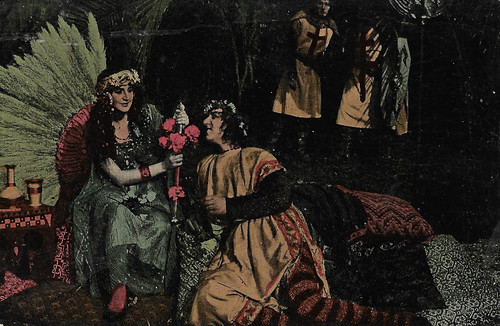
Spanish collectors card by Chocolat Imperiale, Cromo no. 1 of 6. Photo: Exclusiva José Montañola/Guazzoni Film. Edy Darclea as Armida and Beppo Corradi as Rinaldo in the La Gerusalemme liberata (Enrico Guazzoni, 1918). Spanish title: Jerusalén Libertada.
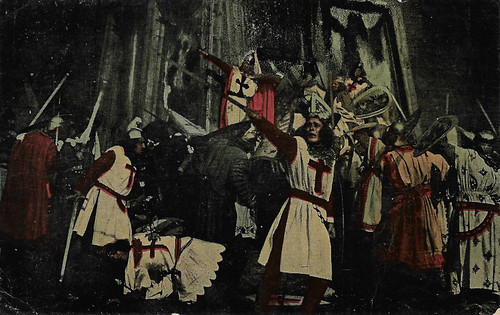
Spanish collectors card by Chocolat Imperiale, Cromo no. 2 of 6. The attack on Jerusalem in La Gerusalemme liberata (Enrico Guazzoni, 1918).
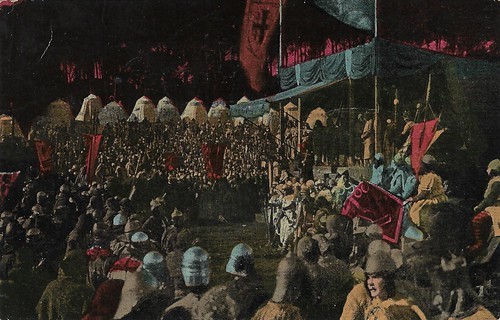
Spanish collectors card by Chocolat Imperiale, Cromo no. 3 of 6. The crusaders' camp in La Gerusalemme liberata (Enrico Guazzoni, 1918).
The battle of Jerusalem
In 1096, Godfrey of Bouillon (Eduardo Monteneve) heads a crusade against the Turks and Aladin (Ljubomir Stanojevick), the cruel king of Jerusalem. His captains are Tancredi from Taranto and Rinaldo from Este. Aladin appoints Clorinda ( Olga Benetti ), an intrepid Persian, to head the troupes defending the city, together with the valiant Argante (Aristide Garbini).
After having saved the lives of Olindo (Rinaldo Rinaldi) and Sofronia, two young Christians condemned to death by the ruthless Aladdin for stealing a sacred image from the mosque, Clorinda fights a duel with Tancredi ( Amleto Novelli ), one of Godfrey's captains. He has fallen in love with her but doesn't want to fight her on the battlefield. Because of her armor and the darkness, he is ignorant of who his adversary is. So, he kills his beloved, who converts to Christianity while dying.
Meanwhile, the beautiful magician Armida ( Edy Darclea ) has enchanted Rinaldo (Beppo Corradi), another crusader, who has fallen in love with her, in her magical garden. Once he re-awakes from the spell, despite the pleas of Armida, he returns to the Christian camp to participate in the assault of Jerusalem, which is conquered after a long and strenuous battle.
The British film journal The Bioscope wrote in 1919 that Gerusalemme liberata confirmed Enrico Guazzoni's talent after his Quo vadis?. The Bioscope considered Guazzoni the master of the revocation of such famous historical events, even more than D. W. Griffith . While most attention went to the mass scenes, individual praise was for Novelli and Benetti. The triumphant entry into Jerusalem was equaled by the victorious entry of the Allies, 800 years after.
In 1911 Guazzoni already had made an earlier version, again with Amleto Novelli in the lead as Tancredi, but this time also with Gianna Terribili Gonzales as Clorinda, instead of Olga Benetti ; with Emilio Ghione as Rinaldo, and Fernanda Negri-Pouget as Armida. Wikipedia mixes up these two versions and mistakes its production year. The 1911 version was well-received, nationally and internationally, and considered the second Italian 'feat' after La caduta di Troia/The Fall of Troy (Giovanni Pastrone, 1911), the first two-reeler epic film.
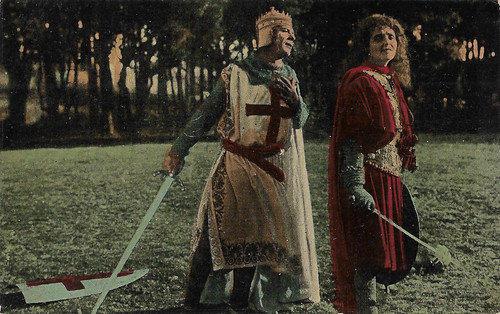
Spanish collectors card by Chocolat Imperiale, Cromo no. 4 of 6. Amleto Novelli as Tancredi and Olga Benetti as Clorinda in La Gerusalemme liberata (Enrico Guazzoni, 1918).
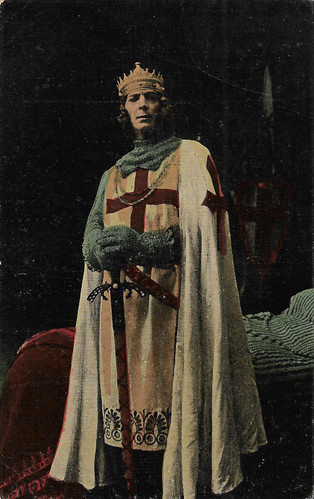
Spanish collectors card by Chocolat Imperiale, Cromo no. 5 of 6. Amleto Novelli as Tancredi in La Gerusalemme liberata (Enrico Guazzoni, 1918).
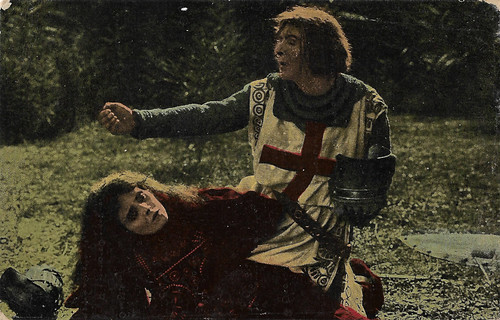
Spanish collectors card by Chocolat Imperiale, Cromo no. 6 of 6. Amleto Novelli as Tancredi and Olga Benetti as Clorinda in La Gerusalemme liberata (Enrico Guazzoni, 1918).
Source: Vittorio Martinelli (Il cinema muto italiano, Vol. 1918 (1991), and Vol. 1911, I (1995)), Wikipedia and IMDb.

Spanish collectors card by Chocolat Imperiale, Cromo no. 1 of 6. Photo: Exclusiva José Montañola/Guazzoni Film. Edy Darclea as Armida and Beppo Corradi as Rinaldo in the La Gerusalemme liberata (Enrico Guazzoni, 1918). Spanish title: Jerusalén Libertada.

Spanish collectors card by Chocolat Imperiale, Cromo no. 2 of 6. The attack on Jerusalem in La Gerusalemme liberata (Enrico Guazzoni, 1918).

Spanish collectors card by Chocolat Imperiale, Cromo no. 3 of 6. The crusaders' camp in La Gerusalemme liberata (Enrico Guazzoni, 1918).
The battle of Jerusalem
In 1096, Godfrey of Bouillon (Eduardo Monteneve) heads a crusade against the Turks and Aladin (Ljubomir Stanojevick), the cruel king of Jerusalem. His captains are Tancredi from Taranto and Rinaldo from Este. Aladin appoints Clorinda ( Olga Benetti ), an intrepid Persian, to head the troupes defending the city, together with the valiant Argante (Aristide Garbini).
After having saved the lives of Olindo (Rinaldo Rinaldi) and Sofronia, two young Christians condemned to death by the ruthless Aladdin for stealing a sacred image from the mosque, Clorinda fights a duel with Tancredi ( Amleto Novelli ), one of Godfrey's captains. He has fallen in love with her but doesn't want to fight her on the battlefield. Because of her armor and the darkness, he is ignorant of who his adversary is. So, he kills his beloved, who converts to Christianity while dying.
Meanwhile, the beautiful magician Armida ( Edy Darclea ) has enchanted Rinaldo (Beppo Corradi), another crusader, who has fallen in love with her, in her magical garden. Once he re-awakes from the spell, despite the pleas of Armida, he returns to the Christian camp to participate in the assault of Jerusalem, which is conquered after a long and strenuous battle.
The British film journal The Bioscope wrote in 1919 that Gerusalemme liberata confirmed Enrico Guazzoni's talent after his Quo vadis?. The Bioscope considered Guazzoni the master of the revocation of such famous historical events, even more than D. W. Griffith . While most attention went to the mass scenes, individual praise was for Novelli and Benetti. The triumphant entry into Jerusalem was equaled by the victorious entry of the Allies, 800 years after.
In 1911 Guazzoni already had made an earlier version, again with Amleto Novelli in the lead as Tancredi, but this time also with Gianna Terribili Gonzales as Clorinda, instead of Olga Benetti ; with Emilio Ghione as Rinaldo, and Fernanda Negri-Pouget as Armida. Wikipedia mixes up these two versions and mistakes its production year. The 1911 version was well-received, nationally and internationally, and considered the second Italian 'feat' after La caduta di Troia/The Fall of Troy (Giovanni Pastrone, 1911), the first two-reeler epic film.

Spanish collectors card by Chocolat Imperiale, Cromo no. 4 of 6. Amleto Novelli as Tancredi and Olga Benetti as Clorinda in La Gerusalemme liberata (Enrico Guazzoni, 1918).

Spanish collectors card by Chocolat Imperiale, Cromo no. 5 of 6. Amleto Novelli as Tancredi in La Gerusalemme liberata (Enrico Guazzoni, 1918).

Spanish collectors card by Chocolat Imperiale, Cromo no. 6 of 6. Amleto Novelli as Tancredi and Olga Benetti as Clorinda in La Gerusalemme liberata (Enrico Guazzoni, 1918).
Source: Vittorio Martinelli (Il cinema muto italiano, Vol. 1918 (1991), and Vol. 1911, I (1995)), Wikipedia and IMDb.
Published on June 30, 2021 22:00
Paul van Yperen's Blog
- Paul van Yperen's profile
- 13 followers
Paul van Yperen isn't a Goodreads Author
(yet),
but they
do have a blog,
so here are some recent posts imported from
their feed.



